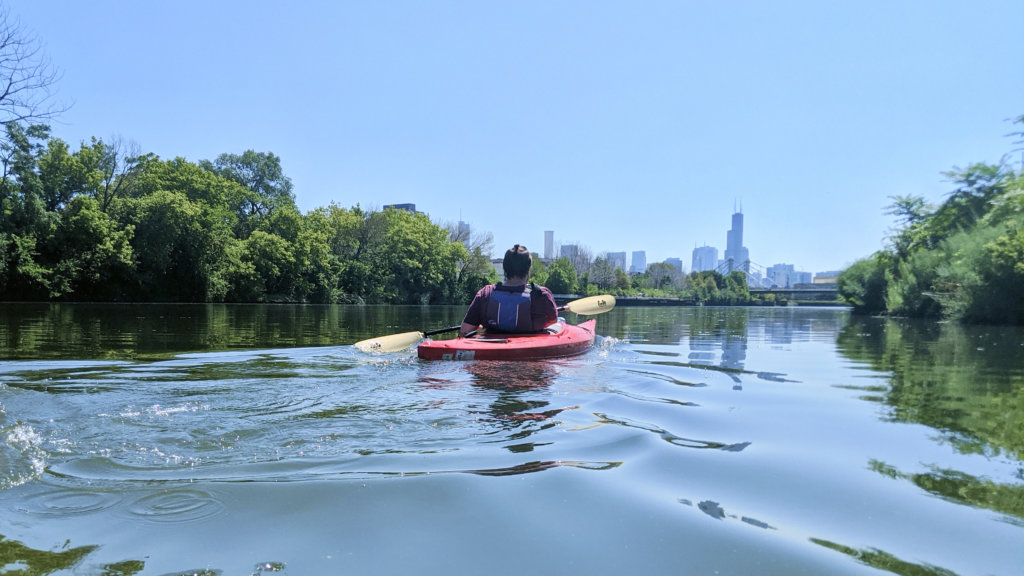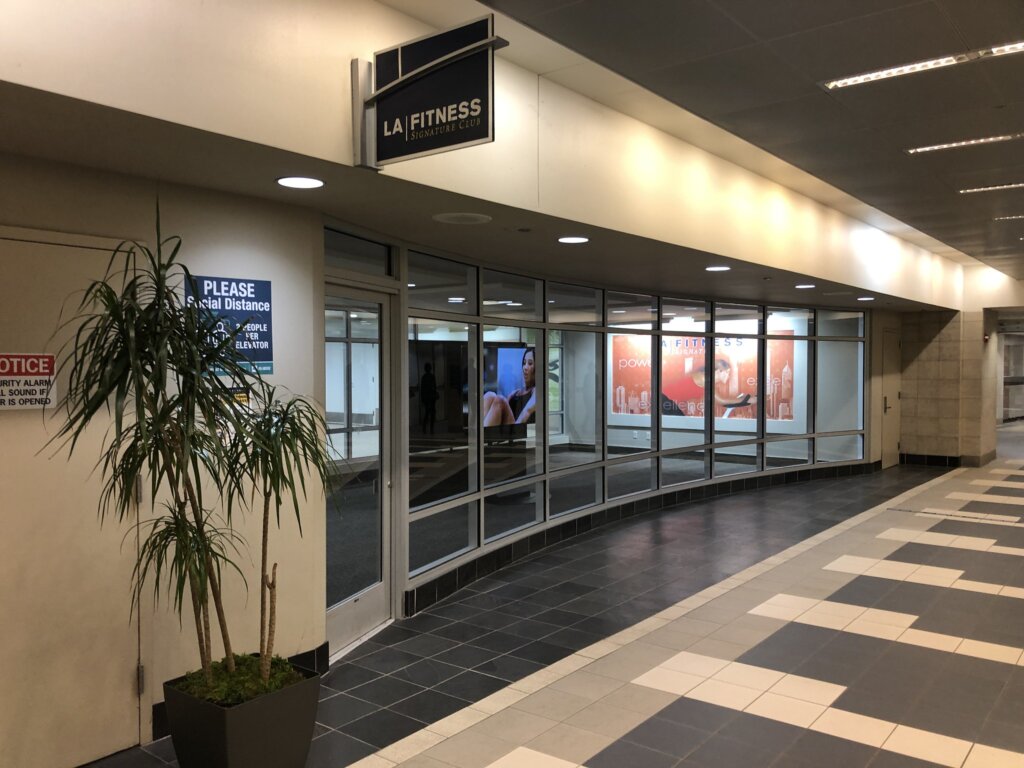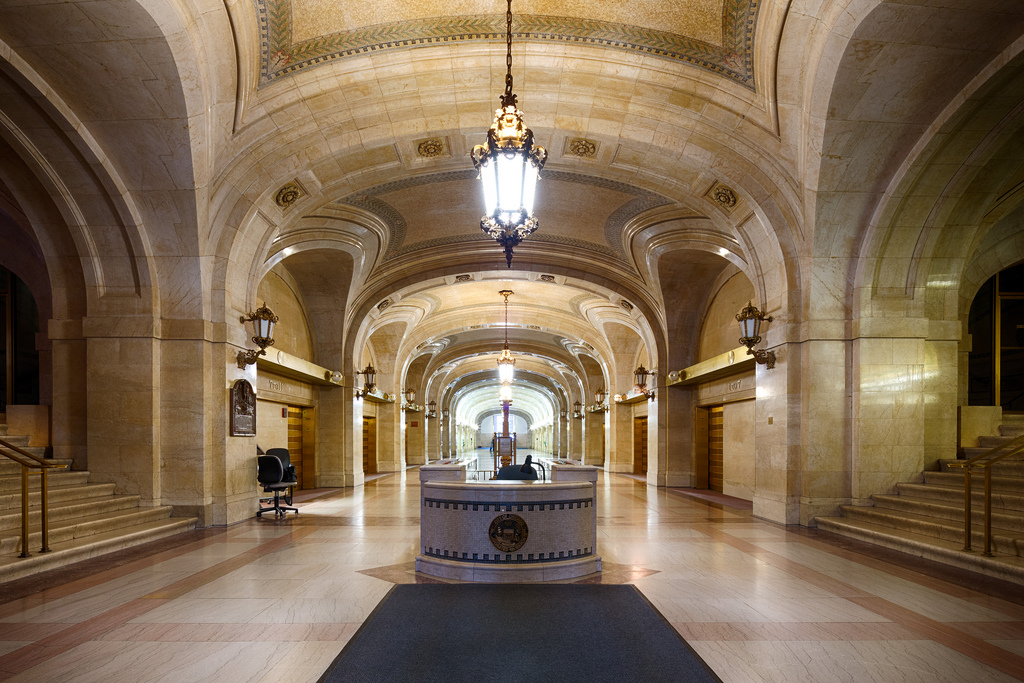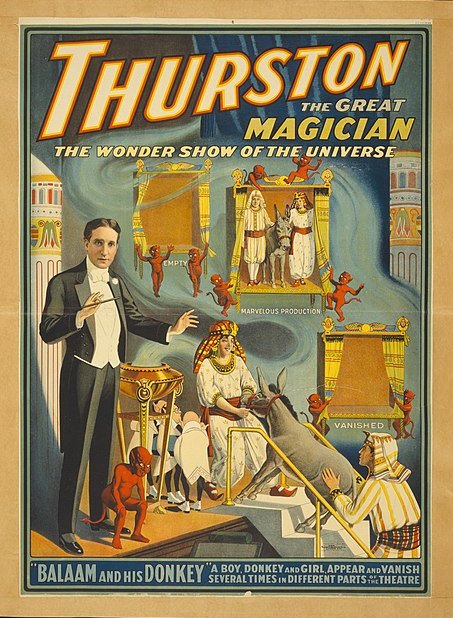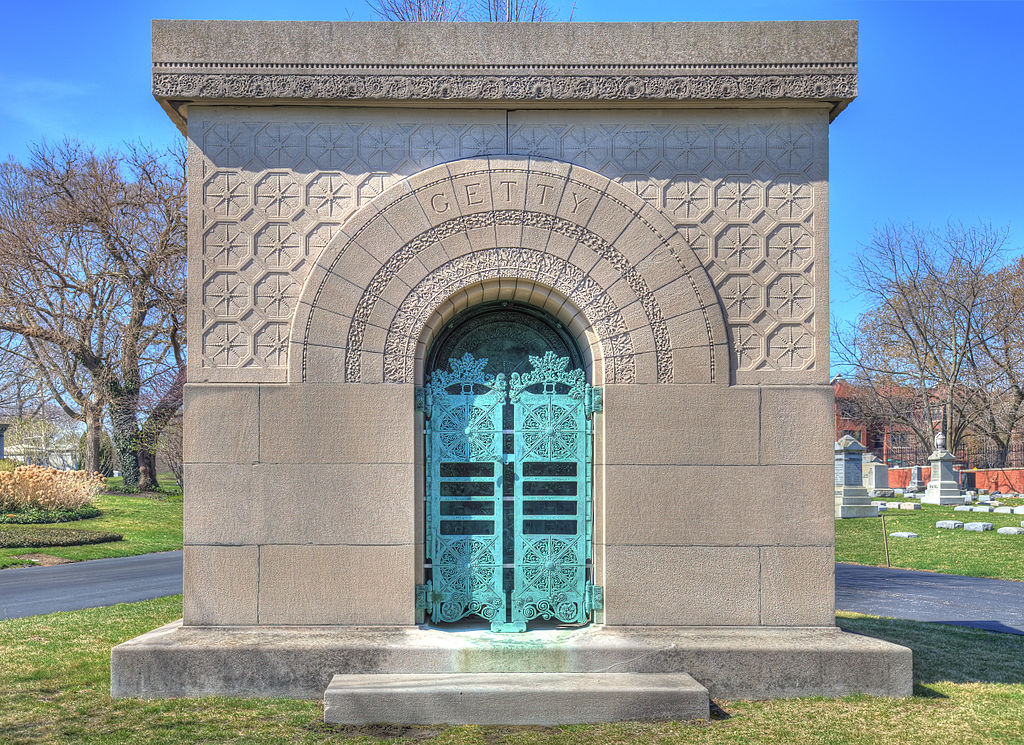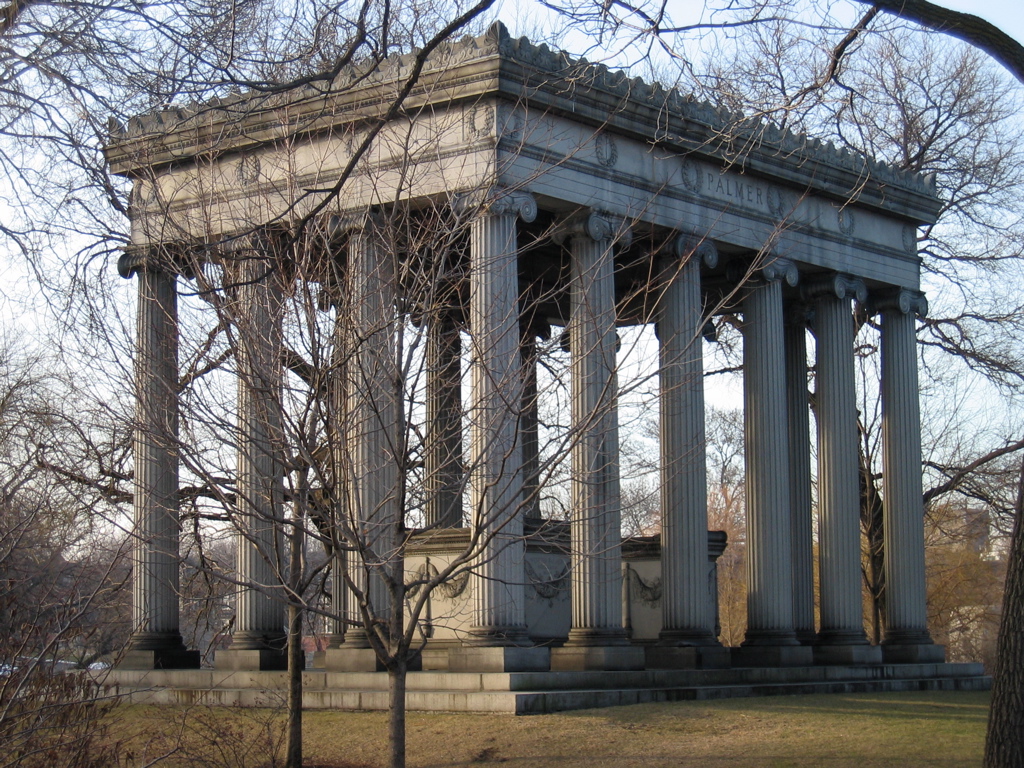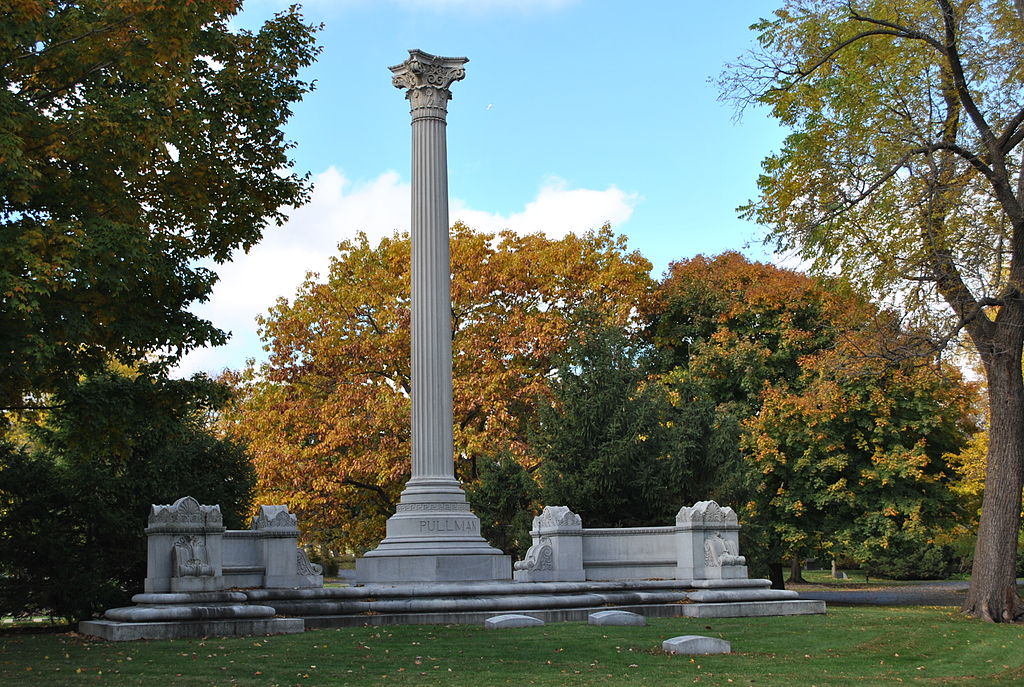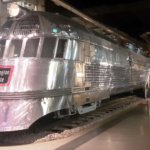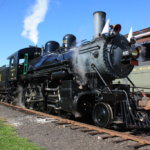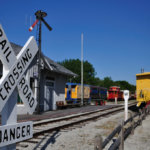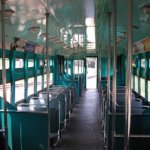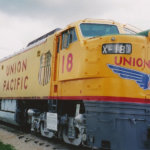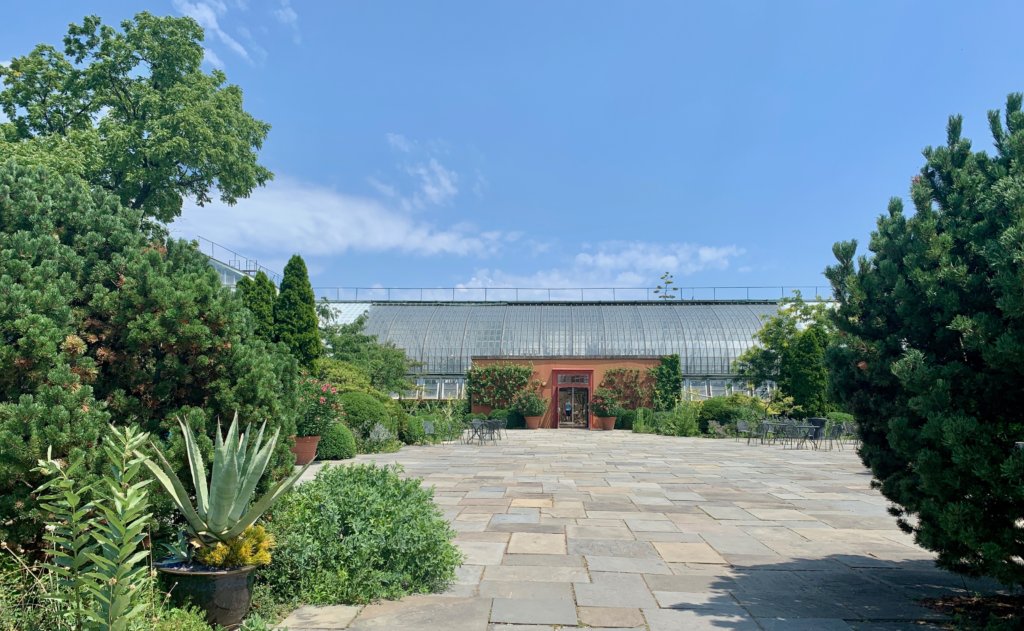14 Outdoor Things to do in Chicago This Summer
– By Tom Schaffner
If you enjoy reading about outdoor things to do in Chicago this summer, then consider signing up for our blog newsletter!
Cold and icy weather generally forces residents and visitors to deal with two distinct Chicago seasons — the “indoor season” and the “outdoor season.” Not surprisingly, the indoor season closely aligns with the fall and winter months (October through March) and the outdoor season closely matches the spring and summer months (April through September).
A list of indoor activities in Chicago usually includes museums, sporting events (such as hockey or basketball), visiting interesting taverns and restaurants, shopping excursions, bowling lanes, indoor gardens and conservatories, gyms & fitness facilities, and much more. The outdoor season means warmer weather and endless opportunities for unique activities and outdoor things to do in Chicago. When the cold finally lets go, Chicagoans head outside in full force. Here’s how to make the most of the city’s outdoor season.
Outdoor Things to Do in Chicago
- Lincoln Park Zoo
- Take in a Ball Game
- The Lakefront Trail
- Kayak the Chicago River
- Japanese Garden
- Visit a Cemetery
- The 606
- Public Art in the Loop
- Art on the Mart
- Charter a Boat
- Chess Pavilion
- Chicago Riverwalk
- Beaches
- Navy Pier
1. Lincoln Park Zoo
Although the Lincoln Park Zoo is open 365 days a year, there’s always more to see and do during the warmer weather than during the harsh winter months. Founded in 1868, the Lincoln Park Zoo is the fourth oldest zoo in the nation and, like other zoos, allows visitors to view the animals in areas that replicate their natural habitats. If you’re looking for outdoor things to do in Chicago that involve roaming around beautiful landscaping with manicured lawns and scenic gardens all throughout a 35-acre site, then The Zoo should be at the top of your list. It is located in the heart of the Lincoln Park neighborhood. Admission is free.
2. Take in a Ball Game
Warmer weather means baseball in Chicago, and both Chicago baseball teams –the Cubs and the White Sox– are once again welcoming fans to the ballpark for another exciting season. While season ticket holders still get early access, plenty of seats are available to the general public and can be easily purchased online. I don’t know about you, but there’s nothing quite like the crack of the bat, a cold beer in one hand, and a hot dog in the other. It just feels like summer in Chicago.
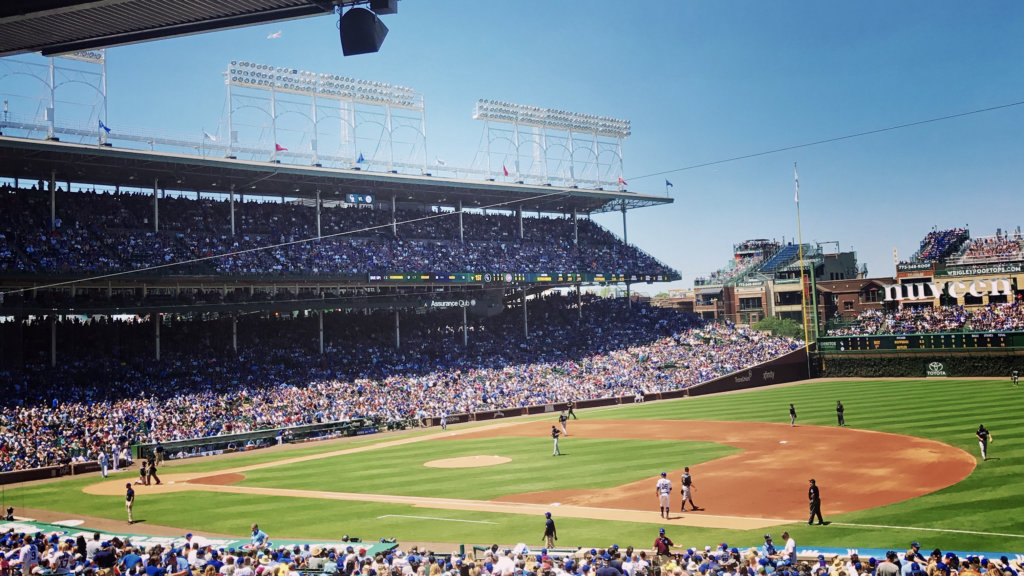
3. The Lakefront Trail
Walk, run, bike, or rollerblade Chicago’s magnificent Lakefront Trail, which stretches for 18 wonderfully scenic miles and offers a variety of outdoor things to do in Chicago all in one place. Along the way, you’ll pass parks, the Museum Campus, Soldier Field, McCormick Place, many views and perspectives of Chicago’s skyline, the South Shore Cultural Center, and many more sites and attractions. Because there is so much to see and do on the Lakefront Trail, many locals insist that traveling this unique path is like taking a “stay-cation” in Chicago.
4. Kayak the Chicago River
Natives and early explorers of Chicago traveled by canoe on the North and South Branches of the Chicago River to reach what would later be called Lake Michigan. You can do the same at various locations along the River with guided tours that depart during all hours of the day, for nighttime sails, and even trips that are timed to coincide with special events that take place in the city, such as the weekly fireworks show at Navy Pier.
5. Japanese Garden
Located in Jackson Park just south of the Museum of Science and Industry is a Japanese garden sometimes referred to as the “Garden of the Phoenix” or the “Osaka Garden,” (Osaka is a sister city of Chicago). The garden was a gift to Chicago from Japan in honor of the World’s Columbian Exposition (1893) which was held in Jackson Park. The blossoming of the cherry trees in spring is an annual highlight of the park, however, the entire garden is beautifully landscaped and located on a secluded island in the park.
6. Visit a Cemetery
This might not be on everyone’s list of outdoor things to do in Chicago, however, cemeteries are quiet, peaceful, landscaped, and are the final resting spot for notable Chicagoans, many of who have beautiful gravestones and mausoleums that adorn their tombs. On the North Side, visit Graceland Cemetery where Daniel Burnham, Ernie Banks, Roger Ebert, Marshall Field, William Le Baron Jenney, Joseph Medill, Ludwig Mies Van der Rohe, Ruth Page, George Pullman, and many other famous people are buried. On the South Side, visit Oak Woods Cemetery, the final resting spot for Cap Anson, Enrico Fermi, John H. Johnson, Jesse Owens, William Hale Thompson, Harold Washington, Ida B. Wells, and Bill Veeck.
7. The 606
The 606 is an abandoned 2.5-mile railroad line that has been converted into an elevated trail/park that runs parallel to North Ave. on the north side of the city from Ashland Ave. on the east to Ridgeway Ave. on the west. Perfect for joggers, walkers and bikers, the trail is clean, well-maintained and also has a number of interesting bars, restaurants and shops that can be visited along the way. The trail takes its numeric name from the first three digits of all Chicago zip codes.
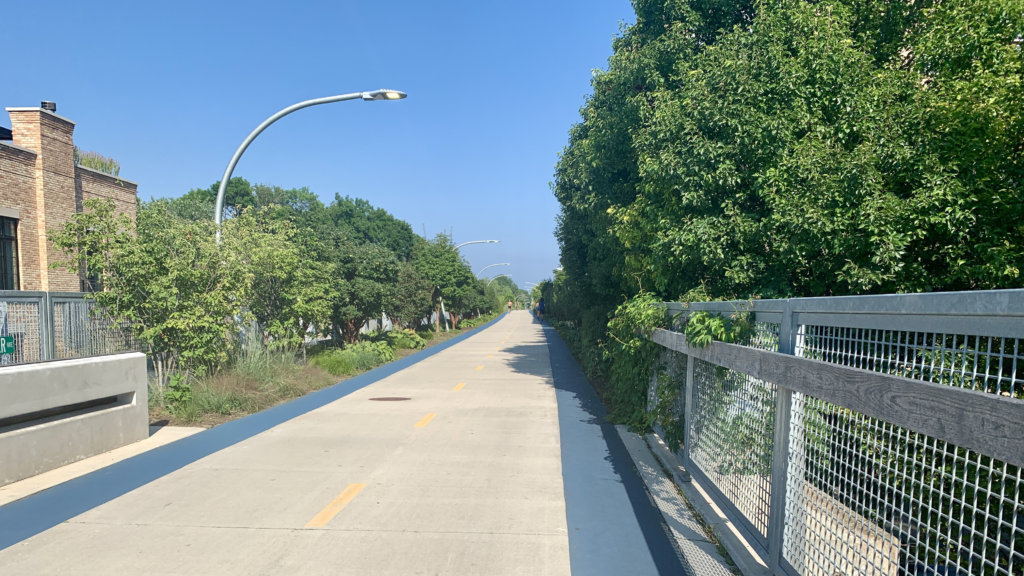
8. Public Art in the Loop
Chicago’s Loop is a veritable gallery of public art featuring works from some of the most famous artists in the world, including Picasso, Calder, Miro, Dubuffet, Chagall, and many more. The most notable (and famous) works are all within a short walk of one another and can easily be found online.
9. Art on the Mart
This innovative digital presentation uses the broad front face of the Merchandise Mart (the side of the building that faces the Chicago River) as a screen to display projected art in nightly “programs” that begin at 8:30 p.m. and 9 p.m. Best spot to view the presentation is from the south bank of the Chicago Riverwalk between Wells and Lake Streets. For those looking for outdoor things to do in Chicago that are truly unique to our city, then this should be on your list!
10. Charter a Boat
There’s an awfully big body of water located on Chicago’s eastern border — why not charter a boat and do some sightseeing, fishing, sun-worshipping or celebrate a special occasion (and let the crew do all of the work)? There are plenty of charter boats in the Chicago area, your next trip is only a few clicks away.
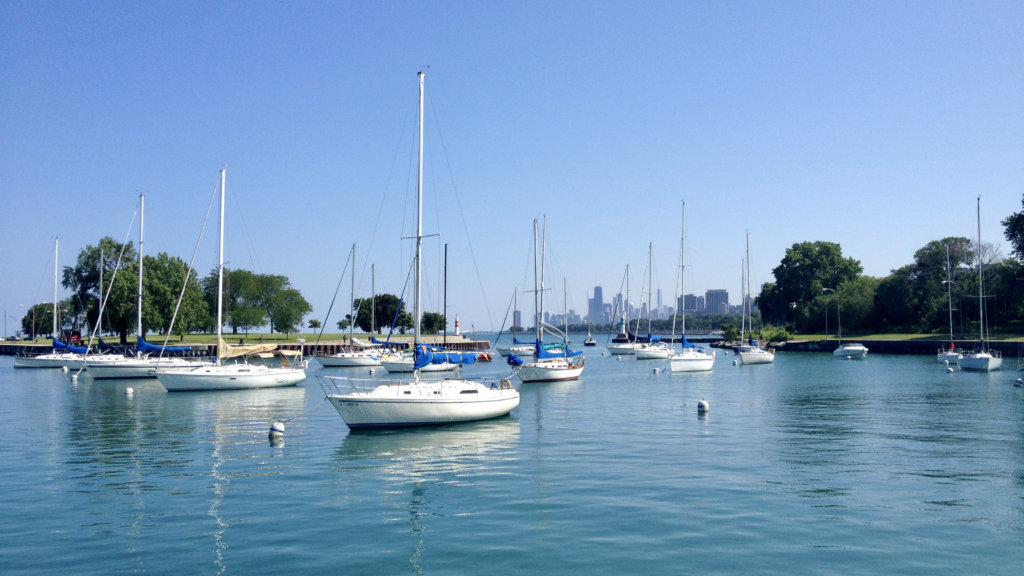
11. Chess Pavilion
If you enjoy playing chess — or enjoy watching others play it — the place to add to your list of outdoor things to do in Chicago is the beautifully designed outdoor chess pavilion located just south of North Avenue Beach in the Lincoln Park neighborhood (just off the Lakefront Trail). The Chess Pavilion structure has chessboards carved into it and they are sheltered from the elements by a wing-like overhang. The structure, built in 1957, also features carvings of chess pieces as well as sculptures of free-standing pieces.
12. Chicago Riverwalk
Located on the south bank of the Chicago River between the lakefront and Lake Street, the Riverwalk is Chicago’s version of the Boardwalk in Atlantic City, it has something for everyone. In addition to enjoying a leisurely stroll along a picturesque river, you can visit outdoor restaurants and taverns, museums, do a little fishing, take boat trips, try your hand at kayaking, view public art, and even do a little bird watching.
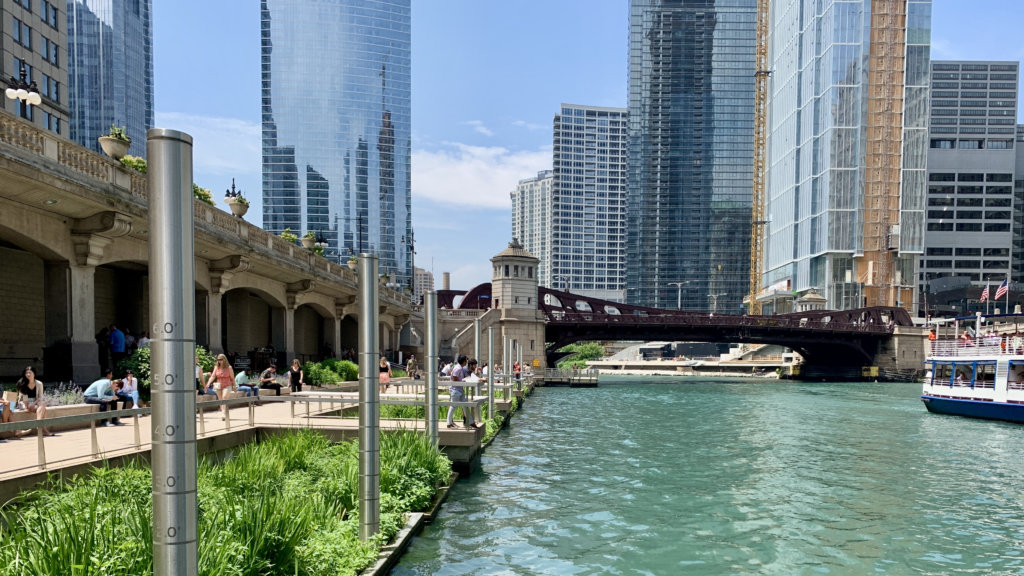
13. Beaches
Chicago’s 26-mile lakefront is one of the city’s greatest treasures and it’s as lively as ever. From biking and strolling the Lakefront Trail to swimming, sunbathing, or picnicking along the shore, there’s no shortage of ways to enjoy the water. With more than two dozen beaches open to the public, you’ll find everything from peaceful stretches of sand to bustling scenes near volleyball courts and beachside cafes. Whether you’re catching sunrise at Montrose or people-watching at North Avenue, Chicago’s beaches are the perfect place to soak up summer.
14. Navy Pier
Buzzing with activity, Navy Pier continues to be one of Chicago’s top lakefront destinations. With year-round attractions, you can enjoy everything from boat rides and waterfront dining to shopping, museums, and live performances. Weekly fireworks light up the skyline every Saturday night at 9 p.m., offering the perfect end to a summer evening. Whether you’re visiting with family or soaking in the views with friends, Navy Pier remains a must-see stop on the city’s lakefront.
Holder of two journalism degrees, including a masters from Northwestern University, Tom Schaffner is a native of the Chicago area and has spent nearly 50 years as a writer, editor, publisher and professional communications consultant. He was also the founder, editor, and publisher of the Chicago File, as well as the co-owner of L Stop Tours.
– By Tom Schaffner
The Loop is one of Chicago’s 77 community areas. It is named for the elevated trains that form a loop over the streets. The area extends beyond the actual train loop, however. Within the area are several neighborhoods and districts including Printers Row, Jewelers Row, and the Theatre District. In addition, the area was also once home to the world’s first skyscraper, the Home Insurance Building.
In recent years, new growth and development have started attracting more tourists and locals. Beyond the usual tourist attractions, The Loop has a lot to offer.
Top Things to Do in the Loop
- Stroll the Lakefront Trail
Walk, skate, scoot, or bike Chicago’s scenic 18.5-mile trail along the Lake Michigan shoreline. It’s one of the best places to enjoy the beauty of the city and its lakeside views. - Hang Out on the Riverwalk
The Chicago Riverwalk is a 1.25-mile path along the river, offering shops, restaurants, bars, and stunning views of the city. It’s a perfect spot to relax, people-watch, or enjoy a drink.
Chicago Riverwalk - Ride the Water Taxi
Hop on the Water Taxi for a unique way to explore the city. It stops at several neighborhoods, including Chinatown, giving you a new perspective of Chicago from the water.
Chicago Water Taxi - Explore Millennium Park
This urban oasis at Randolph St. and Michigan Ave. is home to famous sculptures, beautiful gardens, fountains, and free concerts. Don’t miss the iconic Cloud Gate sculpture (aka “The Bean”).
Address: 201 E Randolph St, Chicago, IL 60602 - Visit the Art Institute of Chicago
Regularly ranked as one of the top art museums in the world, the Art Institute is a must-see for culture lovers. It’s home to thousands of artworks, including masterpieces by Monet, Van Gogh, and Grant Wood.
Art Institute of Chicago
Address: 111 S Michigan Ave, Chicago, IL 60603 - See Buckingham Fountain
Known for its impressive beauty, Buckingham Fountain is a Chicago landmark. Enjoy it by day, but make sure to catch the spectacular 20-minute light and music show every hour at night.
Address: 301 S Columbus Dr, Chicago, IL 60605 - Peek into the Harold Washington Library
This modern library (built in 1991) offers more than just books. It features intriguing exhibits, archives, and the beautiful Winter Garden on the ninth floor, a peaceful spot to relax.
Address: 400 S State St, Chicago, IL 60605 - Discover the Cultural Center
Home to the largest Tiffany Dome in the world, the Cultural Center also hosts art exhibits, performances, and cultural events throughout the year.
Address: 78 E Washington St, Chicago, IL 60602 - Visit the Gene Siskel Film Center
A paradise for film lovers, the Gene Siskel Film Center hosts over 1,500 screenings a year, with a diverse lineup of films and guest artist appearances.
Gene Siskel Film Center
Address: 164 N State St, Chicago, IL 60601 - Explore the American Writers Museum
Opened in 2017, this unique museum celebrates American literature and its most influential writers, offering interactive exhibits and engaging storytelling.
American Writers Museum
Address: 180 N Michigan Ave, Chicago, IL 60601
Best Bars and Restaurants in the Loop
- London House
For spectacular views of the Chicago skyline, head to the rooftop terrace at the London House Hotel. Enjoy a cocktail while taking in the breathtaking sights of the city.
London House
Address: 85 E Wacker Dr, Chicago, IL 60601 - Cindy’s
Located at the top of the Chicago Athletic Association Hotel, Cindy’s offers outdoor seating with stunning views, along with delicious food and drinks.
Cindy’s
Address: 12 S Michigan Ave, Chicago, IL 60603 - The Game Room
If you’re in the mood for some fun, The Game Room at the CAA Hotel offers games like shuffleboard, chess, and foosball along with great drinks and snacks.
The Game Room
Address: 12 S Michigan Ave, Chicago, IL 60603 - Buddy Guy’s Legends
Enjoy live blues music and classic Chicago pub food at this legendary venue, named after the iconic blues guitarist Buddy Guy.
Buddy Guy’s Legends
Address: 700 S Wabash Ave, Chicago, IL 60605 - Miller’s Pub
Serving Chicagoans since 1935, Miller’s Pub offers hearty American cuisine, pub favorites, and cocktails in a cozy, historic setting.
Miller’s Pub
Address: 134 S Wabash Ave, Chicago, IL 60603 - Morton’s The Steakhouse
A classic Chicago steakhouse, Morton’s is known for its high-quality steaks, seafood, and elegant dining atmosphere.
Morton’s The Steakhouse
Address: 65 E Wacker Pl, Chicago, IL 60601 - Prime and Provisions
For a modern twist on the classic steakhouse, Prime and Provisions offers a vibrant atmosphere and delicious cuts of steak, inspired by 1920s supper clubs.
Prime and Provisions
Address: 222 N LaSalle Dr, Chicago, IL 60601 - The Berghoff
A Chicago institution since 1898, The Berghoff serves authentic German cuisine and drinks, including its famous root beer.
The Berghoff
Address: 17 W Adams St, Chicago, IL 60603 - Monk’s Pub
Enjoy craft beer and classic pub fare at Monk’s, a Chicago staple known for its laid-back vibe and great drinks.
Monk’s Pub
Address: 205 W Lake St, Chicago, IL 60606 - AceBounce
If you’re looking for something fun, AceBounce is a Ping Pong bar where you can enjoy drinks, food, and some friendly competition.
AceBounce
Address: 230 N Michigan Ave, Chicago, IL 60601
Discover Chicago’s Loop with L Stop Tours
Now that you know where to eat, drink, and explore in Chicago’s Loop, why not experience it like a local? Book your tour with L Stop Tours and see the city from the comfort of the iconic L Train.
Holder of two journalism degrees, including a masters from Northwestern University, Tom Schaffner is a native of the Chicago area and has spent nearly 50 years as a writer, editor, publisher and professional communications consultant. He was also the founder, editor, and publisher of the Chicago File, a newsletter for former Chicagoans. Tom is also the co-owner of L Stop Tours.
– By Tom Schaffner
The holidays are all about tradition. And if Chicago is your home, there are more holiday “traditions” here than just about anywhere else. We’ve compiled a list of iconic Chicago holiday “traditions” that have helped keep spirits bright throughout the metropolitan area for more than 25 years:
- CTA Holiday Train
- City of Chicago Christmas Tree
- Do it Yourself Messiah
- Christmas Around the World
- Butch McGuires
- Hardrock, Coco and Jo
- A Christmas Carol at the Goodman
- The Great Tee at the Walnut Room
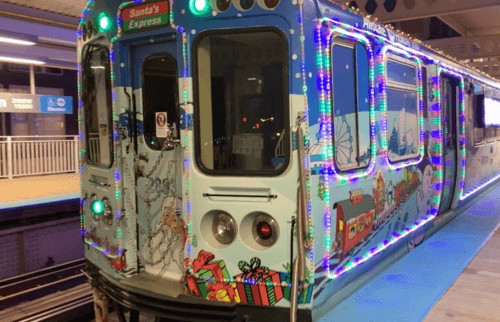
1. CTA Holiday Train
This beloved tradition began in 1992 when an employee placed a “Season’s Greetings” sign on a Blue Line train that delivered meals to local charities. Today it is a six-car train that is festooned with multi-colored holiday lights, red bows, garland, red and green overhead lights and hand poles that are decorated to look like candy canes. Christmas music wafts from the PA system and a real, live Santa Claus rides on an open-air flatcar and waves to boarding passengers from his sleigh. The train, which runs at various times on all six lines throughout the holiday season, continues to deliver food baskets to charitable organizations and continues to delight passengers in this, its 26th year of operation.
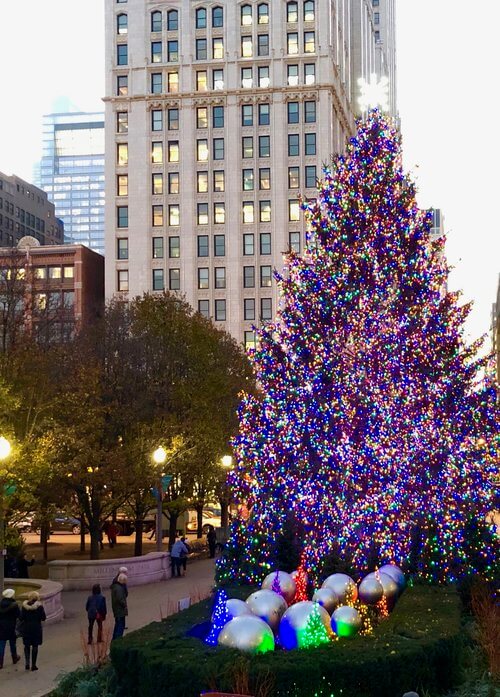
2. City of Chicago Christmas Tree
Chicago’s first municipal Christmas tree, a 35-foot Douglas Spruce, was lit in Grant Park in 1913 on Christmas Eve by Mayor Carter H. Harrison. The tree was a gift from an associate of Captain Herman Scheunemann, captain of the “Christmas Tree Ship” that annually delivered Christmas trees to Chicago from Michigan. The tree was lit in memory of the Captain who had gone down with his ship during a Lake Michigan storm the year before. Since then, Chicago’s municipal Christmas tree spent close to 50 years in Grant Park, 50 years at the Civic Center Plaza (now Daley Center Plaza) and, since 2015 has been located in Millennium Park. This year’s tree, a 60-foot Norway Spruce, was donated by Deborah Orth and her family from Elmhurst.
3. Do-It Yourself-Messiah
A Chicago holiday tradition since 1976, the Do-It-Yourself Messiah is a performance of Handel’s Messiah with a world-class conductor, professional musicians and over 1,000 amateur participants — the audience — who are invited to participate in the production by singing all the chorus portions of Messiah. This year’s performances, which will take place at the Harris Theatre for Music and Dance, are again expected to be sold out.
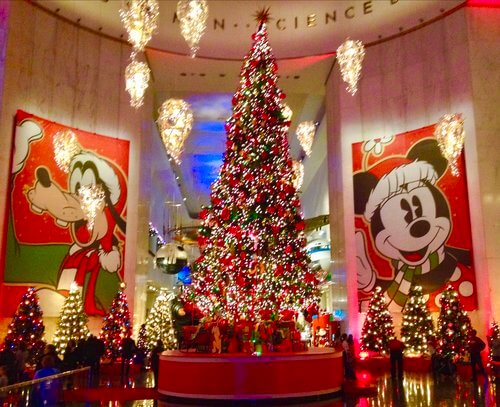
4. Christmas Around the World
Now in its 76th year, Christmas Around the world at the Museum of Science and Industry is a beloved annual exhibit that has been enjoyed by millions of visitors over the years. The centerpiece of the exhibit is the Grand Tree, a towering 45-foot giant that is decorated with more than 30,00 sparkling lights and hundreds of beautiful ornaments. Surrounding the Grand Tree are 50 Christmas trees decorated by local community groups to reflect the cultures and ethnic traditions of various countries around the world.
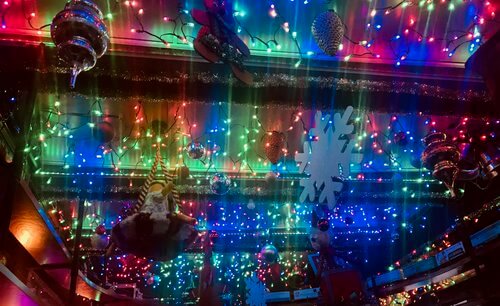
5. Butch McGuire’s
Many businesses throughout Chicagoland decorate their places of business for the holidays — but few can match the over-the-top spectacle of sheer holiday “madness” that covers every square inch of space throughout Butch McGuire’s during the holiday season. The Division Street bar has been decking its halls with Christmas gizmos and gadgets since 1961 and the display now includes four double-decker trains that traverse the ceiling above the bar, unique Christmas mobiles, cartoons and Claymation specials and more than 35,000 miniature lights that illuminate the entire tavern.
6. Hardrock, Coco and Joe
Originally released in 1951 by Centaur Productions, Hardrock, Coco and Joe is a 3-minute animated short subject that tells the story of three helpers who ride on Santa’s sleigh each Christmas. It has become a cult classic among Chicago Baby Boomers who grew up watching it annually on various WGN-TV programs such as Bozo, Garfield Goose and Ray Rayner and Friends and still must watch it every holiday season. If you cannot find Hardrock, Coco and Joe on local programming during the holidays, it is easily downloaded on Youtube.com.
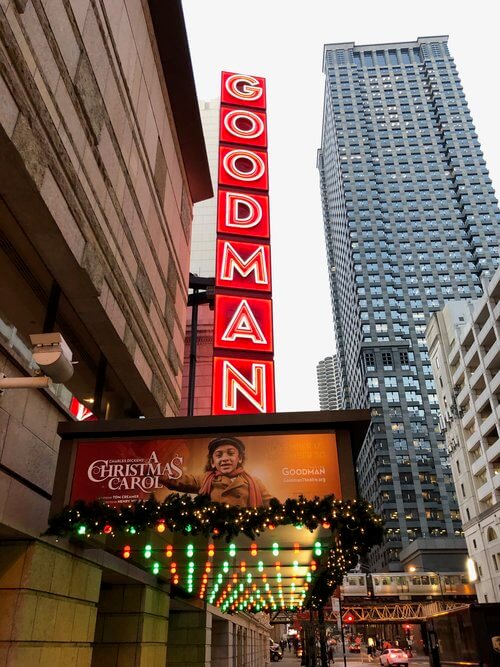
7. A Christmas Carol at the Goodman
For 37 consecutive years, the Goodman Theatre has presented Charles Dickens’ A Christmas Carol to theatergoers during the holiday season. In its nearly four decade run at the theatre, the production has hired 31 Tiny Tims, generated more than 20,000 “Bah, Humbugs!” and has been seen by more than 1.2 million theatergoers.
8. The Great Tree in the Walnut Room
Generations of Chicagoans continue to flock to Macy’s on State Street to have lunch underneath the Great Tree, a beautifully decorated 40-foot masterpiece that stands in the center of the Walnut Room on the seventh floor of the massive downtown department store. The tradition was started by Marshall Field and Company in 1906 and was continued by Macy’s management when they purchased the Field stores in 2006. After lunch in the Walnut Room, a secondary tradition is to view the State Street-facing display windows that have been decorated to celebrate the holidays.
Holder of two journalism degrees, including a masters from Northwestern University, Tom Schaffner is a native of the Chicago area and has spent nearly 50 years as a writer, editor, publisher and professional communications consultant. He was also the founder, editor, and publisher of the Chicago File, a newsletter for former Chicagoans. Tom is also the co-owner of L Stop Tours.
Chicago is a great walking city — even if you’re walking underground.
With Chicago’s Pedestrian Walkway system (Pedway), a six-mile system of underground tunnels, pathways and connected corridors, it’s possible to walk from one side of the Loop to the other without encountering traffic, nasty weather, special events or other obstacles. The uncrowded, roof-protected, climate-controlled Pedway is the way to go. It is one of Chicago’s unique “hidden” gems.
And it takes you to a lot of interesting places. The following is a list of highlights encountered on our company’s Pedway tour throughout downtown Chicago:
Small Retail Shops
One of the delights of the Pedway is that some corridors feature a wide array of small retailers — a grilled cheese sandwich stop, a small tavern, doughnut shops, shoe repair, convenience stores, barber shops, and beauty salons. If you enjoy the look and feel of small-town America, these sections of the Pedway are for you.
Fitness Centers
A handful of fitness centers/clubs are accessible via the Pedway. At Randolph and Wabash is an LA Fitness with an indoor swimming pool that is accessible from the Pedway. In the Lakeshore East neighborhood (east of Michigan Ave. and north of Randolph St.) is the Lakeshore Sports and Fitness Club.
Macy’s Chicago
Macy’s Loop store, the second largest department store in the U.S., embraces the Pedway with four separate entrances at the sub-basement level, as well as a collection of 22 stained-glass windows that face the entrances on the opposite wall. In addition to shopping, Macy’s offers the iconic Walnut Room (the nation’s oldest continuously operating department store restaurant) and a Tiffany-designed tile ceiling with 1.6 million pieces of iridescent glass that is not to be missed.
City Hall/Cook County Building
If you have official business to take care of, the Pedway also goes to the City Hall/Cook County Building (Clark and Randolph Sts). While you’re there you can get a lot of things done (especially if you don’t have to carry your heavy winter coat around). You can visit Chicago’s mayor (if you’ve got enough clout to get past the guards in the lobby), pay your property taxes, apply for a liquor license, marvel at the fancy decor of the building, or get married. That’s right, get married. They’ve been marrying couples at City Hall for more than 100 years at Marriage Court, located on the Pedway at the north end of the building. If you time your visit just right, you may be asked to serve as a witness by some lovestruck couple.
Millennium Station
The Pedway enters Millennium Station (formerly Randolph St. Station) in different spots, including lower Michigan Ave., the Prudential Building and the Cultural Center. If you need to catch a commuter train to Chicago’s southern suburbs or the South Shore Line to Gary or South Bend, Indiana, Millennium Station is your destination. A wide variety of food and beverages are available here for hungry, thirsty travelers.
AMC Dine-In Movies
If you’d like to watch a movie and get a bite to eat at the same time, take the Pedway to the Block 37 building (Washington and State Sts.) and head toward AMC Dine-in Movies, one of several entertainment options connected to the Pedway.
Cultural Center
The easiest way to enter the Cultural Center from the Pedway is to find the “golden elevator,” and take it up one floor to the lobby of the building. In addition to art exhibits, concerts, lectures and special events, the Cultural Center (Randolph St. and Michigan Ave.) is home to the world’s largest Tiffany Dome, as well as a second dome commissioned by the Grand Army of the Republic when the building was built (1895).
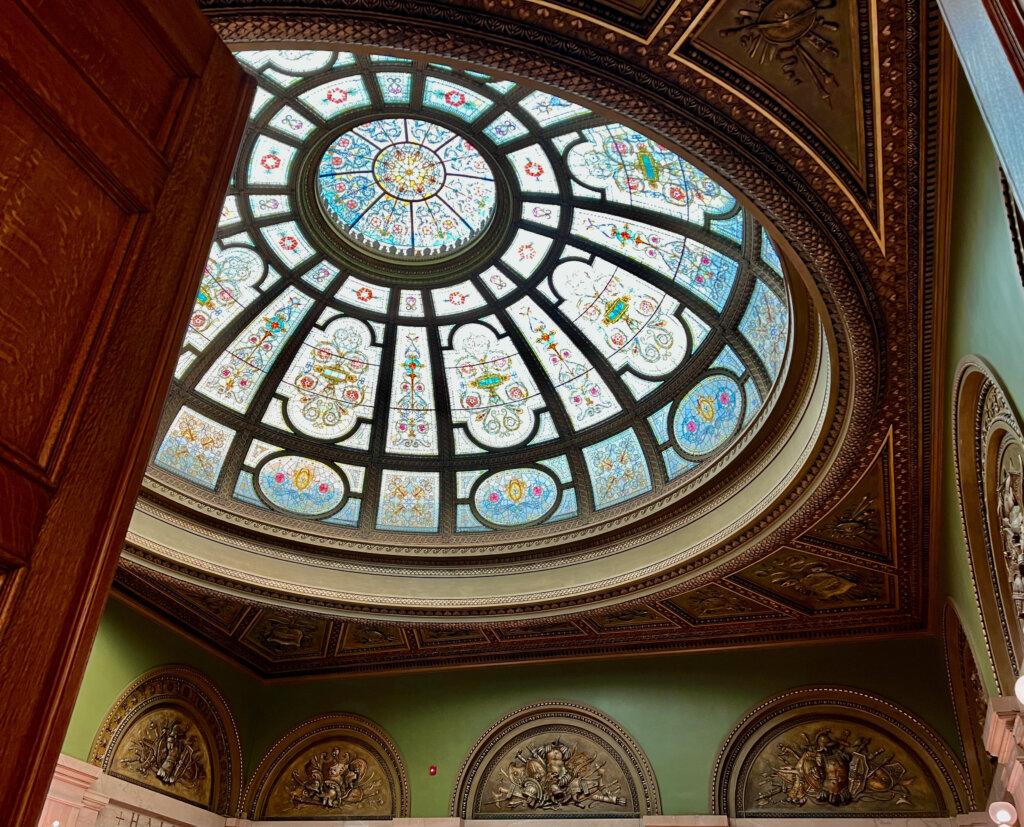
Red Line/Blue Line
Chicago’s two busiest L lines — the Red Line and the Blue Line — are not elevated when they pass through the Loop. They are subways that run parallel to one another one block apart (on State St. and Dearborn St. respectively). In 1951, two tunnels were dug between the two lines to enable passengers to cross from one line to the other. These tunnels became the first sections of Chicago’s Pedway and also served as inspiration for the construction of the entire system. To this day, these original Pedway tunnels are still in use, serving CTA passengers and Pedway walkers alike.
Chance the Rapper
Don’t miss a Pedway mural painted by student artists from the School of the Art Institute on lower Randolph St. (near Wabash). The artists were asked to select a contemporary who was up and coming in the performing arts and include him/her in the mural. They selected a then little-known artist — Chance the Rapper — now a global superstar who calls Chicago “home.”
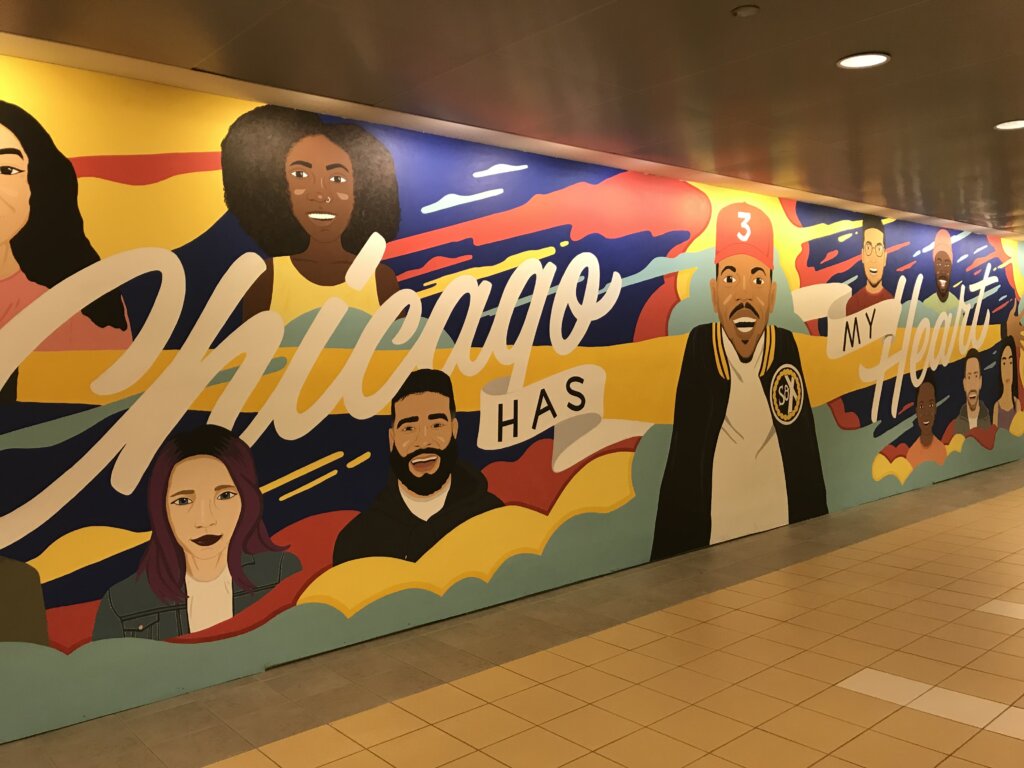
Daley Plaza
If you exit the Randolph St. Pedway at Dearborn St. by ascending the adjoining greystone stairs, you’ll find yourself in the middle of Richard J. Daley Plaza, home to several Chicago landmarks. Note the iconic, untitled sculpture by Pablo Picasso, a statue on Washington St. by Joan Miró, the Richard J. Daley Civic Center (offices and courtrooms) and the First United Methodist Church at Chicago Temple, a 23-story Gothic-style building which houses “Chapel in the Sky,” the world’s highest place of worship.
Lakeshore East Hotels
East of Michigan Ave. and north of Randolph St. is a newer city neighborhood known as Lakeshore East. If you’re interested in staying in a hotel that’s connected to the Pedway, this neighborhood has a wide array from which to choose — Swissôtel, Hyatt Regency, Fairmont, Radisson Blu Aqua and the St. Regis.
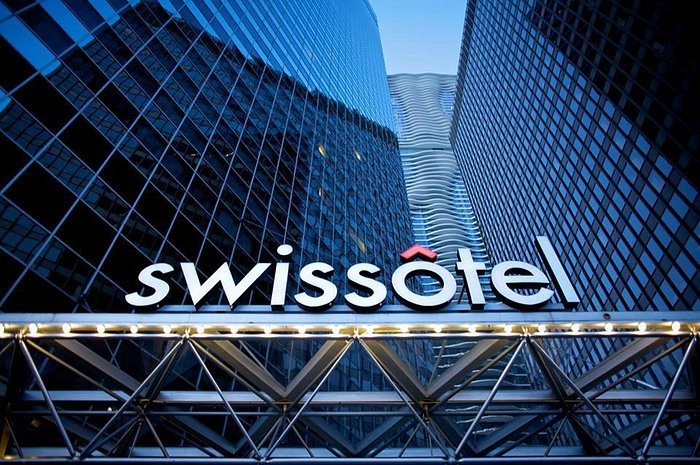
Amazon Go
Located in the Pedway beneath the Prudential Building, Amazon Go allows you to purchase items without having to wait in line to check out. All you need is your phone and the company’s app — you select your items and then simply walk out of the store. It’s hassle free and convenient — just like the Pedway.
Harris Theatre
If you want to see a show and don’t want to travel outside to get there, take the Pedway east to Randolph St. and visit the Harris Theatre, Chicago’s home for music and dance productions of all types. The Harris Theatre is located at the north end of Millennium Park.
– By Tom Schaffner
If you enjoy reading about the history of Magic in Chicago and want to learn more about the city and its history, then consider signing up for our blog newsletter!
Magic, as a form of entertainment, has a long and checkered history in Chicago.
In 1893, two aspiring young magicians had a chance encounter on the Midway Plaisance at the Chicago World Columbian Exposition. Though both were employed as lowly sideshow performers at the fair, they agreed to share their magic secrets with each other in hopes of bolstering their acts. The two fledgling illusionists? Harry Houdini and Howard Thurston, both of whom would go on to become world-famous magicians in less than 20 years.
Impressive Illusions
Because of their growing popularity, Houdini and Thurston would book themselves frequently into Chicago theaters where their shows were always sold-out. Houdini cemented his legend as an escape artist in 1898 when he escaped from a jail cell in Chicago’s South Loop Levee District after being bound by shackles and leg irons. The Great Thurston dazzled audiences with a trick in which playing cards mysteriously rose in the air and also with a floating lady illusion known as the “Levitation of Princess Karnac.” A third magician, Harry Blackstone, Sr. (a native Chicagoan who took his name from a famous local hotel) also began to make a name for himself around the turn of the century. Blackstone’s most famous illusion was sawing a woman in half.
While big-time magic shows were popular in Chicago and in other cities across the country for a quarter of a century, they quickly fell out of fashion. Houdini’s death in 1926, the introduction of talking films in 1927, and the onset of the Great Depression effectively brought an end to big-time magic shows as a form of entertainment. They were costly to stage, few audience members could afford the price of a ticket and there were cheaper options for entertainment, like motion pictures.
A New Kind of Magic Show
After World War II, however, the economy boomed and Chicagoans once again were on the lookout for new and different ways to amuse themselves. In response, performers in Chicago pioneered a new type of “close-up” magic show, one that abandoned the large props and machinery of previous big-time magic acts in favor of smaller illusions (card tricks, disappearing objects, items emerging from a hat) that could easily be performed at a table or before an intimate crowd in a nightclub.
In the 1950s and ’60s, close-up magic flourished in Chicago. Clubs like the Empire Room in the Palmer House and the Pump Room at the Ambassador East Hotel hired strolling magicians to entertain customers tableside. Schulien’s, in North Center, hired magicians to come to your table after your meal to perform a 10-minute show and the New York Lounge on Irving Park Road specialized in late-night magic shows (which ran until 4 a.m.). Additionally, retail magic shops featuring all kinds of do-it-yourself magic tricks sprang up across the city, including five near Dearborn and Randolph in the Loop —Ireland’s, Joe Berg, Abbott’s, National Magic Company, and the Treasure Chest.
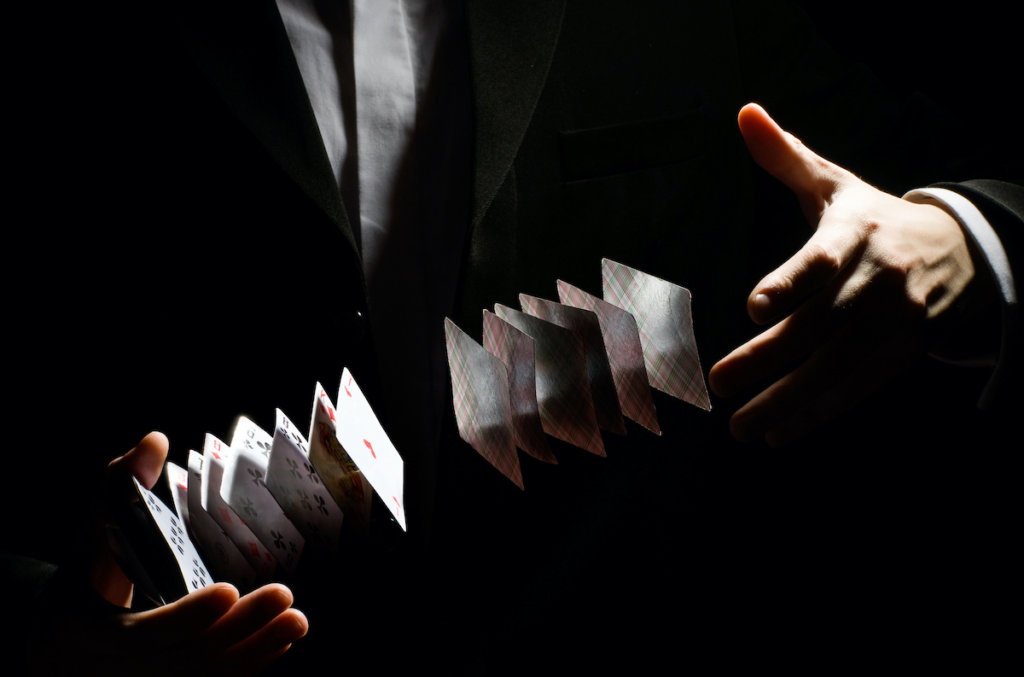
The Chicago Magic Scene Today
While magic as a form of entertainment — or retail enterprise — is not as popular in Chicago today as it was several decades ago, there still are a number of venues where you can enjoy up-close magic with your favorite food or beverage. There are also several independently-owned retail shops throughout the city that are devoted primarily to magician’s craft. Because of the pandemic, some of these venues and stores have closed temporarily, limited their service hours or have created alternative programming. Please check each listing’s website for accurate and timely information about business hours and operations.
Ash’s Magic Shop (4955 N. Western)
Ashod “Mr. Ash” Baboorian was an immigrant from Iraq who loved magic. He developed a comical magic act in the close-up Chicago style and began to play in area clubs and taverns in the 1960s and 70s. In 1985, he decided to open his own magic shop in Lincoln Square, just down the street from the legendary New York Lounge. The shop is crammed with tricks and other magic paraphernalia for beginners and professionals. Though Mr. Ash recently passed away, his family is keeping the shop open, even during the pandemic.
Chicago Magic Lounge (5050 N. Clark St.)
Opened in 2015 in Andersonville as an homage to the close-up magic bars and restaurants of the past, this retro-styled venue (1930s-40s look and feel) features strolling magicians who do close-up card tricks and other illusions tableside for customers. The Magic Lounge also has several small theaters in which to showcase tour magicians and related mystical entertainment. Though the venue is “closed temporarily” during the pandemic, it does offer virtual cocktail hours every Friday evening and also has interactive virtual magic shows that can be arranged for private parties.
Midwest Magic (Franklin Park)
Staking out fertile magic territory in the suburbs is Midwest Magic, a retail store that carries more than 14,000 items and bills itself as “the largest magic shop in the world.” In addition to tricks, gags, and related items, Midwest Magic claims to have one of the most comprehensive collections of books about magic in the industry. The shop encourages patrons to “hang out” and interact with clerk/magicians who attempt to stump and amaze you by performing tricks from behind the counter.
The Magic Parlour (Palmer House Hotel)
Normally, magician Dennis Watkins performs an intimate, up-close magic show on weekends in a small showroom at the Palmer House Hotel. However, the pandemic has temporarily halted the shows at the Palmer House, so Watkins has developed a virtual show, “The Magic Parlour at Home,” in which he delivers an interactive magic and mind-reading show directly to customers in their homes (via Zoom).
The Magic Penthouse (Kimpton Palomar Hotel)
Temporarily closed due to the pandemic, this is a monthly penthouse “party” (elegant cocktail attire, gourmet food, music, adult beverages) on the rooftop of a hotel that includes several wandering magicians who perform magic throughout the venue. Pay one fee and you can enjoy a relaxing evening of food, booze and up-close magic.
Magic Inc. (1838 W. Lawrence)
This well-established retailer bills itself as “the world’s leading-edge magic source for magic tricks, magic books, magic DVDs, magic lessons and magic lectures.” Catering to amateurs and professionals alike, the shop’s origins date to 1926 when it was located in the Loop and called Ireland Magic Company. Several locations later, the store settled in Ravenswood where it still does a brisk business, boasting of an inventory of more than 10,000 items.
Holder of two journalism degrees, including a masters from Northwestern University, Tom Schaffner is a native of the Chicago area and has spent nearly 50 years as a writer, editor, publisher and professional communications consultant. He was also the founder, editor, and publisher of the Chicago File, a newsletter for former Chicagoans. Tom is also the co-owner of L Stop Tours.
– By Tom Schaffner
Singin’ the Blues of the City at Chess Records in Chicago
Several decades ago, in a small terra cotta structure located at 2120 S. Michigan Ave., a recording studio helped propel a Chicago record label into one of the most famous in the music business. But what happened to Chess Records in Chicago, the city’s most prolific record company in the 20th century?
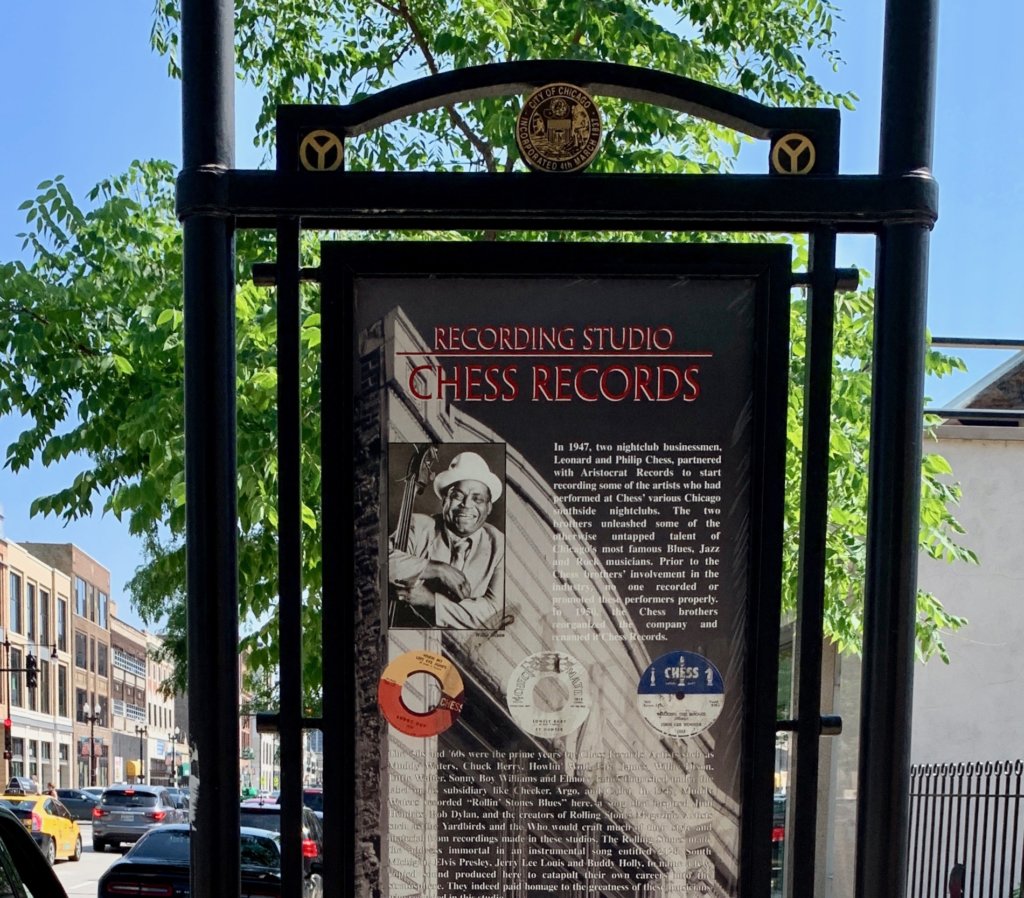
In 1968, Leonard and Phil Chess, founders of the firm, sold it to a company called GRT, which promptly turned around and sold it to Sugar Hill Records in the mid-1970s. MCA Records, part of the entertainment conglomerate that counts among its holdings Universal Pictures, now owns the 10,000 hours of Chess recordings and is presently reissuing the Chess artists to newer, younger audiences.
More than anywhere else in the world, Chess Records in Chicago was famous for popularizing the blues and helping introduce it to the mass market — both domestically and overseas. And this introduction, according to many in the music industry, literally changed the course of music history.
Listen to The Best of Chess Records on Amazon Music as you read! As an Amazon Associate, we earn from qualifying purchases.
The Story of Chess Records in Chicago
It began in 1946 when the Chess brothers were operating a dingy bar at 3905 S. Cottage Grove called the Macamba, which was a dark, smoky lounge where musicians often hung out. Lionel Hampton, Louis Armstrong, Charlie Parker and Ella Fitzgerald sat in the house band.
Leonard Chess, acting on a hunch, left the club to establish his own record company, recording people who played at the Macamba. Leonard’s first artist, on a label he called Aristocrat, was Andre Tibbs, who sang the “Union Man Blues.”
Before the end of the decade, the Chess label was established and the firm had moved into its two-story headquarters on South Michigan Ave., about 20 blocks south of the Loop.
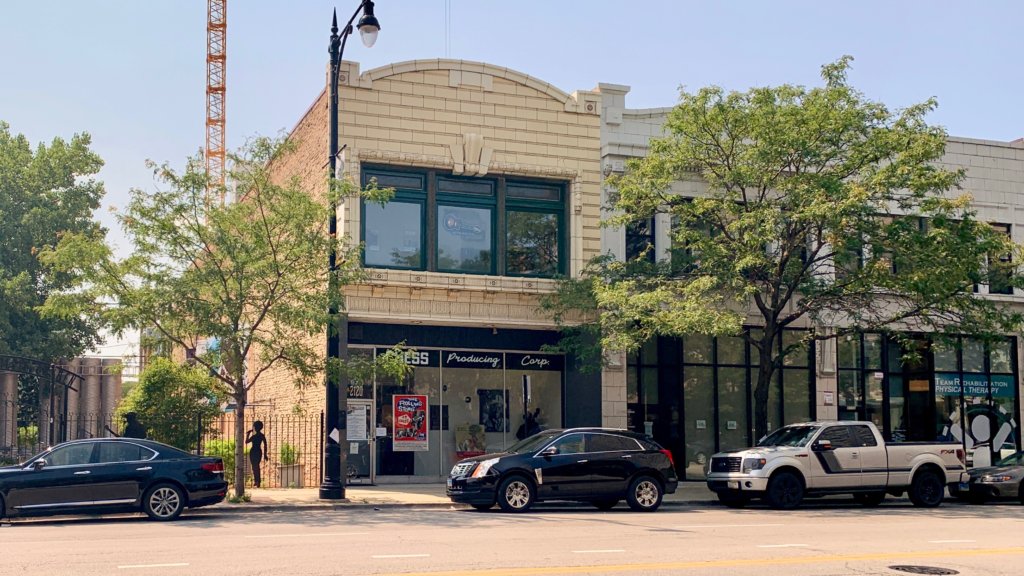
The sound the Chess brothers were after was a kind of electrified-Southern, or Mississippi Delta blues. It was a distinctive sound, featuring a hard-driving beat that, depending on the artist, might include a little gospel, some jazz or what later would become known as “soul.” And the brothers searched throughout the South to find exactly the right type of artists to record.
The Success
Among the legendary musicians who climbed the long flight of stairs to Chess’ second floor recording studios on Michigan Avenue were Howlin’ Wolf, Bo Diddley, Sonny Boy Williamson, Ramsey Lewis, Etta James, Frontella Bass, Willie Dixon, the Rev. C.L. Franklin and his daughter Aretha and Chicago’s legendary Muddy Waters.
By the late 1950s, business at Chess Records in Chicago was booming and the company began to add other labels, including Argo, Checker, Cadet and Cadet Concept. Chess was becoming known as the international headquarters for the blues.
The Impact
And the sounds coming out of the Michigan Avenue studios were extremely influential, particularly in Britain. In Liverpool, rhythm and blues records were in great demand among local youth and particularly among two young rock band members named Lennon and McCartney.
In London, another rock-star-to-be, Keith Richards, met a young musician by the name of Mick Jagger in a record shop because he noticed Jagger had a Chess records album under his arm. Later, when Richards and Jagger put together a rhythm and blues-based rock band, they called themselves the Rolling Stones after a Chess-recorded Muddy Waters cut called “Rolling Stone.”
A few years later, when the Rolling Stones were on their first tour of America, they stopped in to record tracks for the “12 x 5” album at Chess Records in Chicago. One of the cuts earned the title “2120 S. Michigan Ave.,” a kind of dedication to the place that produced the music that influenced them the most.
“I recorded some of my biggest hits at that address,” said rock pioneer Chuck Berry in the Chicago Sun-Times. “I have a lot of memories of it. They were great days of great music.”
The Legacy
Although Chess Records in Chicago vanished from the local scene when the company was purchased by GRT in 1968, the building where it all took place on south Michigan Avenue still stands today. It achieved landmark status from the City of Chicago in 1990.
Today the building is owned by the estate of legendary blues artist Willie “Wang Dang Doodle” Dixon and it has become a museum. The organization that operates it is called the Blues Heaven Foundation, which raises funds for music scholarships, helps supplement the income of blues musicians and helps promote the blues legacy.
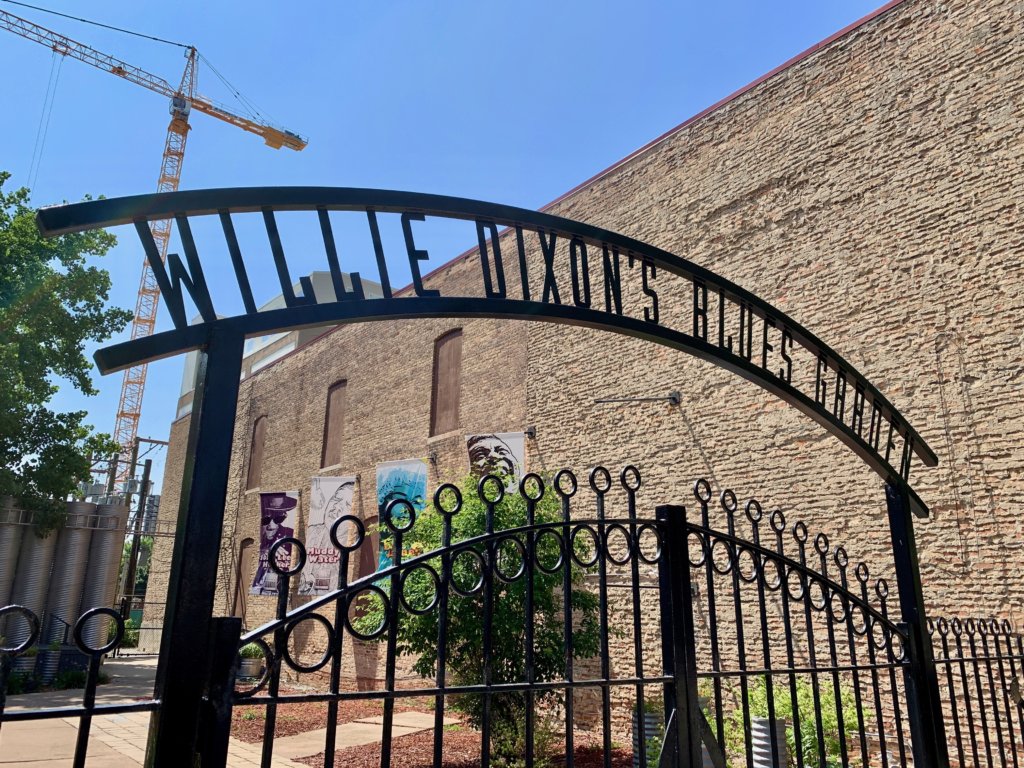
Chess Records, 2120 S. Michigan Ave. can be seen on our “Prairie District: Street of the Elite” tour.
Holder of two journalism degrees, including a masters from Northwestern University, Tom Schaffner is a native of the Chicago area and has spent nearly 50 years as a writer, editor, publisher and professional communications consultant. He was also the founder, editor, and publisher of the Chicago File, a newsletter for former Chicagoans. Tom is also the co-owner of L Stop Tours.
– By Tom Schaffner
Looking for something interesting to do on a dreary afternoon?
Take the CTA Red Line to the Sheridan stop and walk a few blocks west to the Clark St. entrance of Graceland Cemetery — one of the most historic sites in the City of Chicago.
Graceland Cemetery is the final resting spot for some of Chicago’s best known citizens and also serves as home to some of the most spectacular grave sites and monuments in the entire city. Getty Tomb, designed by well-known architect Louis Sullivan (who is also buried at Graceland), is an official Chicago landmark and is perhaps one of the most photographed tombs in the United States. It is the final resting spot for Carrie Eliza Getty, wife of wealthy Chicago lumber baron Henry Harrison Getty.
Graceland Cemetery
Two important and often photographed sculptures by Lorado Taft are also found at Graceland — Eternal Silence (or the Statue of Death) and The Crusader. Additionally, a granite baseball two-feet in diameter, with stitching, marks the grave of William Hulbert, founder of Major League Baseball’s National League.
One of Chicago’s most famous businessmen, hotelier Potter Palmer, is buried at Graceland with his wife, Bertha, underneath a majestic columned monument. Nothing less would have been fitting for the Palmers. Mr. Palmer was the founder of one of the grandest hotels in the city, the Palmer House; Mrs. Potter Palmer was a revered socialite who devoted herself to many philanthropic causes throughout her life.
Not far away is the majestic monument and tomb of George Pullman, best known for his Pullman Palace railroad cars and the unique, self-contained industrial town he established on the city’s South Side.
The list of famous names goes on. Also buried here are newspapermen Joseph Medill (editor of the Chicago Tribune) and Victor Lawson (founder of the Chicago Daily News); meatpacker and industrialist Philip Armour; inventor of the reaper Cyrus McCormick; retailer Marshall Field; Chicago’s first detective and founder of the Secret Service, Allan Pinkerton; one of Chicago’s first settlers, John Kinzie, Jack Johnson, the first African American world heavyweight boxing champion, father and son mayors of Chicago, Carter Harrison, Sr. and Carter Harrison Jr., “Mr. Cub” Ernie Banks and world renowned architect Luwig Mies van der Rohe.
Other people buried here are known by the streets that have since been named after them, such as Charles H. Wacker, John Peter Altgeld and Alexander N. Fullerton.
The most beautiful grave site is located in the middle of the cemetery on a small island overlooking a tranquil pond. A simple plaque on a rock commemorates the final resting spot of Daniel H. Burnham and his wife.
It is appropriate that Mr. Burnham occupies such a beautiful location for it was his Plan for the City of Chicago that laid out the future growth and objectives for Chicago, always emphasizing its beauty. Completed in 1909, Burnham’s Plan is still the benchmark against which new plans for the city are measured.
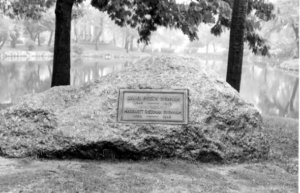
Writing about the cemetery, Crain’s Chicago Business editor Dan Miller pinpoints the unique draw of Graceland: “It offers something every generation of American seeks — tangible evidence of an honorable history, and veneration of our ancestors.”
It also offers visitors a unique sense of Chicago, people who were primarily responsible for building the City into the great metropolis it is today.
Perhaps it is fitting, then, that the only sound that penetrates the eternal silence of Graceland is another iconic piece of Chicago’s history — a rickety, rumbling, above-ground railroad that clatters its way down the cemetery’s eastern border. Like rolling thunder, it arrives with a crash…and then slowly rumbles into the distance.
You can visit Graceland Cemetery by going on the Red Line. L Stop Tours also hosts a Chicago city tour via the Red Line that shows visitors the city’s Chinatown, Stretterville, and so much more!
Read more about Graceland Cementary: Chicago Stories, Symbols and Secrets. As an Amazon Associate, we earn from qualifying purchases.
Holder of two journalism degrees, including a masters from Northwestern University, Tom Schaffner is a native of the Chicago area and has spent nearly 50 years as a writer, editor, publisher and professional communications consultant. He was also the founder, editor, and publisher of the Chicago File, a newsletter for former Chicagoans. Tom is also the co-owner of L Stop Tours.
– By Tom Schaffner
The Railway Capital of the US
Because of its strategic location in the center of the country — halfway between the Atlantic and Pacific Oceans and smack in the middle of America’s manufacturing and agricultural belts — Chicago has always been the undisputed railway capital of the United States. Even today, more trains arrive in or depart from Chicago on a daily basis than anywhere else in the country (and likely the world).
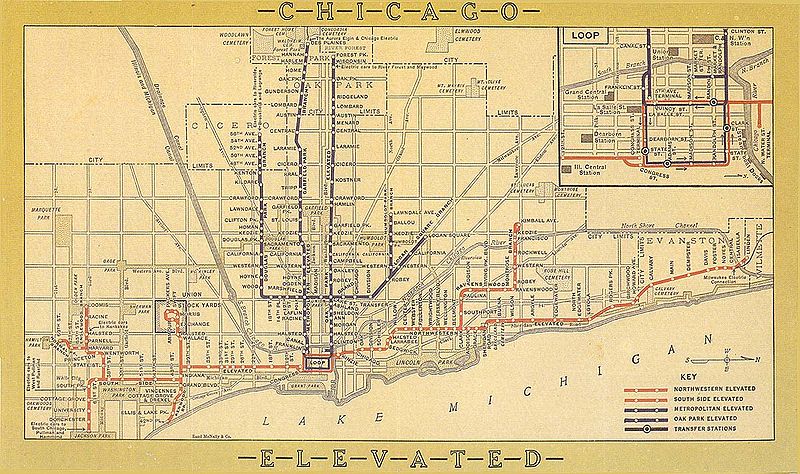 Throughout history, Chicago and railroads have had a symbiotic relationship — both have helped each other grow into strong and viable entities. Chicago contributed to the success of railroads by supporting their growth and development with flexibility and by providing a proactive regulatory environment; the railroads helped Chicago grow by moving billions of tons freight into and out of the city on a regular basis and by making the city a key hub in their network of passenger trains.
Throughout history, Chicago and railroads have had a symbiotic relationship — both have helped each other grow into strong and viable entities. Chicago contributed to the success of railroads by supporting their growth and development with flexibility and by providing a proactive regulatory environment; the railroads helped Chicago grow by moving billions of tons freight into and out of the city on a regular basis and by making the city a key hub in their network of passenger trains.
Additionally, Chicago made trains the centerpiece of its own public transportation system. Beginning with the city’s first elevated railway in 1892 — the “Alley L” (the southern portion of today’s Green Line) — the city has made trains the primary conveyance for moving from neighborhood to neighborhood or one side of town to the other.
Top Train Museums
As the railway capital of the U.S., Chicago is fortunate to be located within a few hours’ drive of several of the nation’s best train museums:
- Fox River Trolley Museum (South Elgin, IL) — The museum maintains a collection of 30 antique electric trolleys, railroad cars and locomotives and is focused on railways and transit lines of the Chicago area. One of the museum’s prized pieces of equipment is the wooden interurban car #20 from the Chicago Aurora and Elgin Railroad. Constructed in 1902, car #20 is the oldest interurban car operating in the United States.
- Illinois Railway Museum (Union, Il) — Located about 60 miles northwest of the city, the Illinois Railway Museum is the largest railway museum in the world. Founded in 1953, the museum has in its collection 450 pieces of historic equipment, including steam engines, diesels, streetcars, interurbans and passenger and freight cars, many of which can be ridden on tracks that run throughout the site. For fans of Chicago’s elevated transit system, a visit to Barn 8 is a must — it contains every type of L car that has run on the system since 1898.
- Museum of Science and Industry (Chicago, IL) — Though technically not a railway museum, the Museum of Science and Industry contains several historic locomotives, the opportunity to tour the Burlington Route’s 1934 Pioneer Zephyr, which was America’s first diesel-electric stainless steel Streamliner, and the world’s largest model train exhibit, “The Great Train Story,” which presents 2,200 miles of scenery and stories as a model train emulates the trip from Chicago to Seattle along 1,400 feet of track.
- A. Philip Randolph Pullman Porter Museum (Chicago, IL) — There are no locomotives or passenger cars to examine or explore but that doesn’t make this museum any less important in the history of train travel in the U.S. This museum, housed in Pullman National Historic Landmark District, contains a collection of artifacts and documents related to the Brotherhood of Sleeping Car Porters and celebrates the organization’s role in the U.S. labor movement. The porters, most of which were African American, were employed by the manufacturer of the cars, George Pullman, and his Chicago-based Pullman Palace Car Company.
- Mid-Continent Railway Museum (North Freedom, WI) — Located about a four-hour drive northwest of Chicago, the Mid-Continent Railway Museum has 13 steam locomotives and 7 diesel engines, including #1325 from the Chicago and North Western Railroad. The museum also has the largest collection of wooden passenger cars in the United States, has six of only seven surviving wooden boxcars built by Mather Stock Car Company and has in its collection the nation’s last surviving fish car.
- Hoosier Valley Railroad Museum (North Judson, IN) — Halfway between Chicago and Indianapolis is the Hoosier Valley Railroad Museum, which is located near the junction of four historic railroad lines — the Chesapeake and Ohio, the Pennsylvania, the New York Central and the Erie. Founded in 1988, the museum has more than 30 pieces of rolling stock in its collection, including freight cars, cabooses, diesel switch engines and an Orton locomotive crane. The museum itself is housed in a station formerly owned by the Erie Railroad.
- National New York Central Railroad Museum (Elkhart, IN) — The National New York Central Museum is dedicated to the preservation of the New York Central and includes several outdoor equipment displays, indoor model railroads, artifacts from the railroad and other exhibits pertaining to the history of railroading. The museum consists of a modified New York Central Twentieth Century Limited train and a freight house built by the Lake Shore & Michigan Southern Railway in 1907.
- New Buffalo Railroad Museum (New Buffalo, MI) — Located on the grounds of what was once the largest train yard in Southwest Michigan, the New Buffalo Railroad Museum is home to exhibits and collections recalling New Buffalo’s proud heritage as a railroad hub for both the Pere Marquette and Chesapeake & Ohio. The rail line behind the Museum still carries CSX freight trains through the stanchions of one of the original coal towers. Visitors can stroll through a box car and ap Pullman Sleeper Car for military troops.
- Monticello Railway Museum (Monticello, IL) — About 18 miles west of Champaign, the Monticello Railway Museum is home to over 100 pieces of railroad equipment, including several restored diesel locomotives and cars. Founded in 1966, the organization’s original goal was to encourage the Chicago Burling and Quincy Railroad to continue operating steam excursions for rail enthusiasts. When that effort failed, curators of the organization decided to operate their own steam excursions and, shortly, thereafter, a museum was born.
If you’re interested in visiting other museums in the city, many of our Chicago tours visit museums that cover all sorts of topics — from Chinese history to American economics. Learn more about L Stop Tours today!
Holder of two journalism degrees, including a masters from Northwestern University, Tom Schaffner is a native of the Chicago area and has spent nearly 50 years as a writer, editor, publisher and professional communications consultant. He was also the founder, editor, and publisher of the Chicago File, a newsletter for former Chicagoans. Tom is also the co-owner of L Stop Tours.
– By Tom Schaffner
The Warmest Place in Chicago
Where’s the warmest, sunniest place in Chicago during the winter months? The Garfield Park Conservatory, of course.
Located about four miles directly west of the Loop — and only a few short steps from the CTA Green Line L Stop (Lake St. and Central Park Ave.) — the verdant, lush 4.5-acre Garfield Park Conservatory is a tropical resort that you can escape to whenever the winter weather in Chicago turns nasty. With more than 2,100 plant species growing in 8 indoor spaces, the Garfield Park Conservatory is one of the largest greenhouse conservatories in the United States. Because of the variety of its plant collection as well as the unique design of the building, the Conservatory is often referred to as “landscape art under glass.”
A Little History
Constructed between 1906 and 1907, the Conservatory was conceived and designed by Chicago’s West Park Commission’s general superintendent and chief landscape architect, Jens Jensen. Hoping to create the “largest publicly owned conservatory under one roof in the world,” Jensen achieved his dream by consolidating smaller greenhouses in nearby Douglas and Humboldt parks into a new facility at Garfield Park. Many of the plantings that survive today came from these smaller greenhouses. Jensen firmly believed that “the country must come to the city” and wanted the Conservatory to reflect the beauty that nature had to offer.
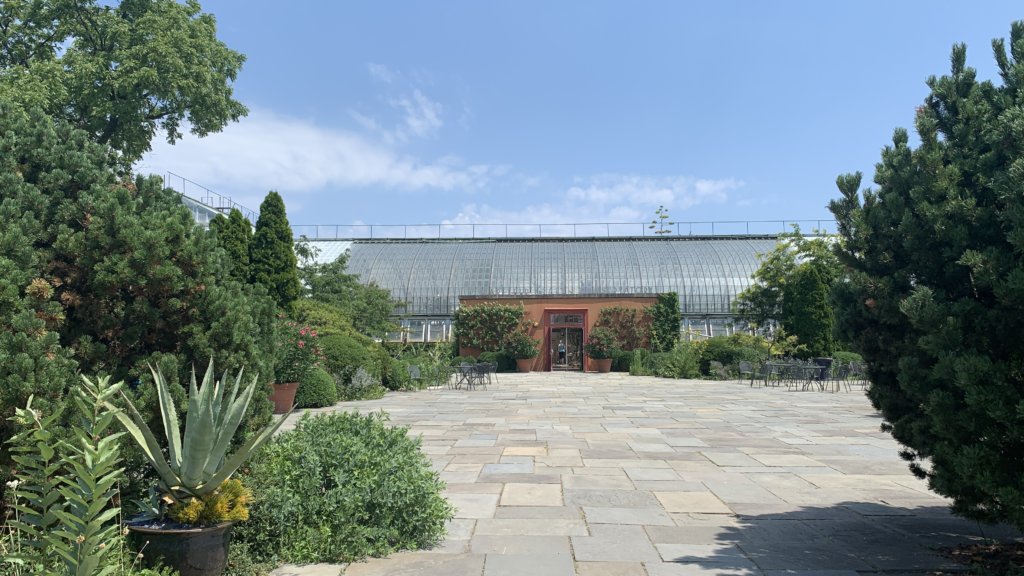
Current Conservatory
Today the Conservatory still follows the basic tenants of Jensen. The huge Palm Room contains over seven dozen varieties of palm trees, of which only 2,700 varieties are known to exist today; the Fern Room provides visitors with a glimpse of what Illinois looked like millions of years ago; the Desert Room holds one of the region’s most varied collections of cacti and succulents; and the Aroid Room contains many popular indoor houseplants. The Conservatory also has a room that explains the process of photosynthesis, an indoor children’s garden, a show house that often hosts special shows and exhibits and 12 acres of beautiful outdoor gardens.
The Conservatory also hosts a number of special exhibits, concerts, classes and special events, including a Winter Flower show, a composting demo, yoga classes, botanical painting classes for seniors, a community holiday concert, beekeeping classes, and much more.
Holder of two journalism degrees, including a masters from Northwestern University, Tom Schaffner is a native of the Chicago area and has spent nearly 50 years as a writer, editor, publisher and professional communications consultant. He was also the founder, editor, and publisher of the Chicago File, a newsletter for former Chicagoans. Tom is also the co-owner of L Stop Tours.
– By Tom Schaffner
If you enjoy reading about the best parks in Chicago, then consider signing up for our blog newsletter!
With more than 600 parks comprising 8,800 acres of green space, the Chicago Park District is the largest municipal park manager in the nation. It also is responsible for 28 indoor pools, 50 outdoor pools, and 26 miles of lakefront including 23 swimming beaches and one inland beach.
The city’s park system is also convenient. A recent study found that 98 percent of all city residents live within a 10-minute walk — or roughly half a mile — of a public park. In other words, serenity is not very far away.
Since we offer Chicago walking tours that utilize the L to visit neighborhoods throughout the city and suburbs, we’ve compiled a list of our favorite neighborhood parks that are also easily accessible via the L.
Best Parks in Chicago With Easy Access to the L
- Ping Tom Memorial Park (Via Green Line)
- Garfield Park (via Red Line)
- Wicker Park (Via Blue Line)
- Douglas Park (Via Pink Line)
- Grant Park (Via Any Line Except Yellow)
- Gillson Park (Via Purple Line)
- Humboldt Park (Via Blue Line)
- Oz Park (Via Brown Line)
1. Ping Tom Memorial Park (Via Red Line)
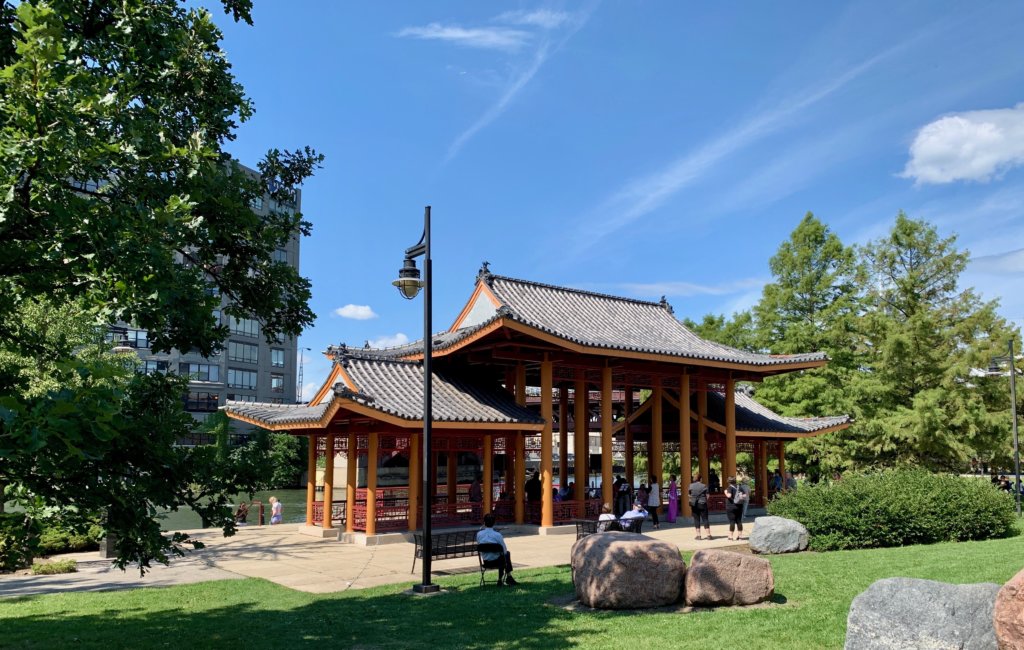
This beautiful 17.24-acre park is located on the south bank of the Chicago River, a few blocks from the Cermak-Chinatown stop on the CTA’s Red Line and, of course, the Chinatown neighborhood (which you see more of on our Chicago Chinatown Food Tour.). Named for Ping Tom, a prominent Chinatown businessman and civic leader, the park was created in October 1999 and features a pagoda-style pavilion, bamboo gardens and a playground. In warmer weather, the Chicago Water Taxi makes scheduled stops at Ping Tom Park from various downtown locations.
2. Garfield Park (Via Green Line)
Only steps from the Green Line, Garfield Park is a 184-acre green space that was designed by William LeBaron Jenney, architect of the world’s first skyscraper (Chicago’s Home Insurance Building). It is the oldest of the city’s three original West Side Parks, which include Humboldt Park and Douglas Park. The centerpiece of the park is the 4.5-acre Garfield Park Conservatory, one of the largest greenhouse conservatories in the United States. Open year-round, the conservatory is particularly enticing in the middle of winter when it offers visitors an escape from the white snow into a world of green. You can experience the Garfield Park Conservatory during our Fulton Market tour!
3. Wicker Park (Via Blue Line)
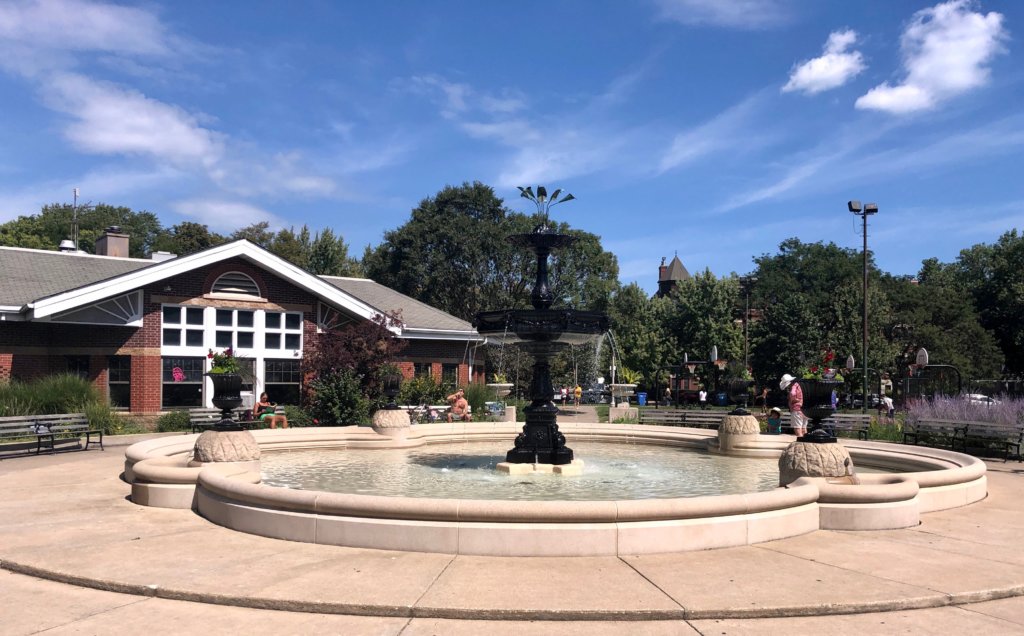
Though only four acres, Wicker Park is a much-beloved and widely-used community park in the heart of one of Chicago’s toniest neighborhoods. Located only steps from the Blue Line L stop at Damen, Wicker Park is dog-friendly and includes baseball diamonds, a walking path, a spray pool and a water playground for children and a statue of Charles Wicker, who, with his brother Joel, donated the park to the community in hopes that it would one day spur development within the community. It did, perhaps well beyond even the wildest dreams of the Wicker brothers.
4. Douglas Park (Via Pink Line)
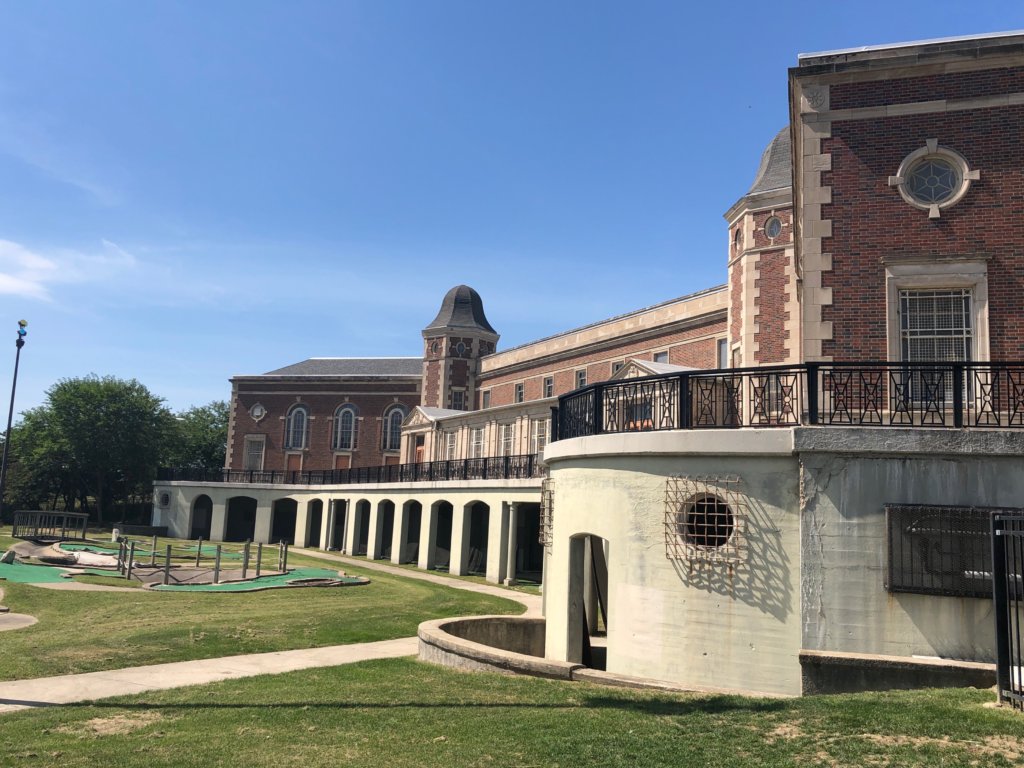
A short walk from the Pink Line station at California is Douglas Park, named in honor of Stephen A. Douglas, a U.S. Senator from Illinois who lost the 1860 presidential race to Abraham Lincoln, also from Illinois. Spanning 173 acres and straddling a few neighborhoods on the city’s West Side (Pilsen and North Lawndale), Douglas Park was built for recreation. It currently houses a miniature golf course, five playgrounds, an outdoor swimming pool, soccer fields, basketball courts and an oval running track. It also features a beautiful lagoon, a wide variety of trees, and an old stone bridge. You can see more of what the Pink Line offers on our Pilsen Chicago Neighborhood tour!
5. Grant Park (Via Any Line Except Yellow)
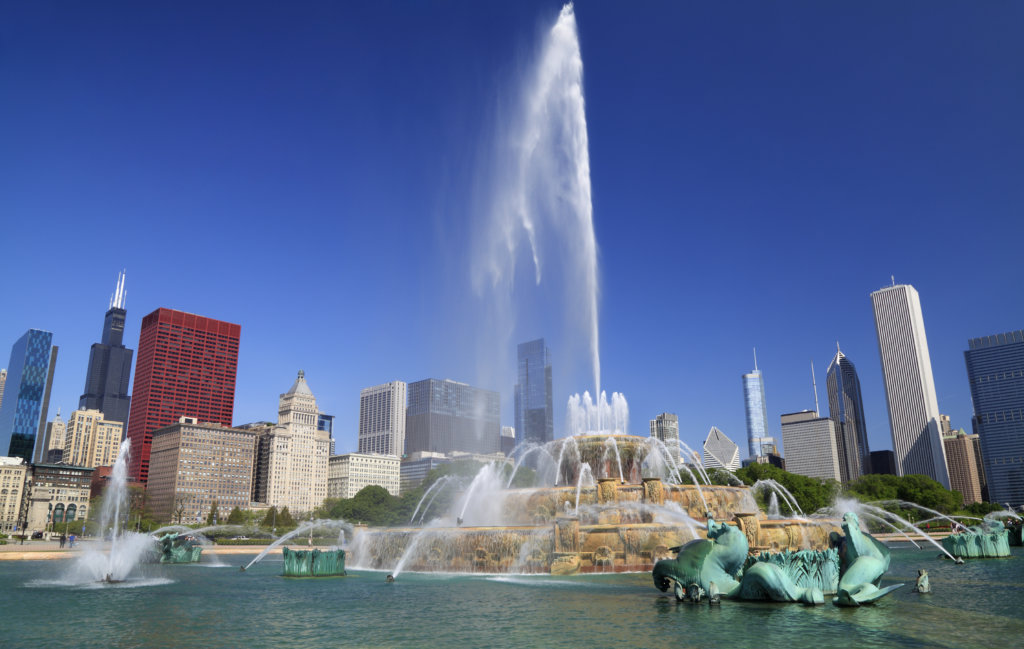
Also proudly referred to as “Chicago’s Front Yard,” Grant Park is one of the city’s largest green spaces, stretching from Randolph St. on the north to the Museum Campus on the south, Michigan Ave. on the west and Lake Michigan on the east. In addition to baseball diamonds, soccer fields, tennis courts and breathtaking gardens, Grant Park also hosts innumerable food and music festivals and other special events throughout the year. Also part of the greater Grant Park area are Millennium Park, Maggie Daley Park, Buckingham Fountain, The Art Institute, The Field Museum, Shedd Aquarium, Adler Planetarium and two leisure boat harbors. The 313-acre park, one of the largest in the city, can be accessed by any L (except the Yellow Line) at stations throughout the Loop.
6. Gillson Park (Via Purple Line)
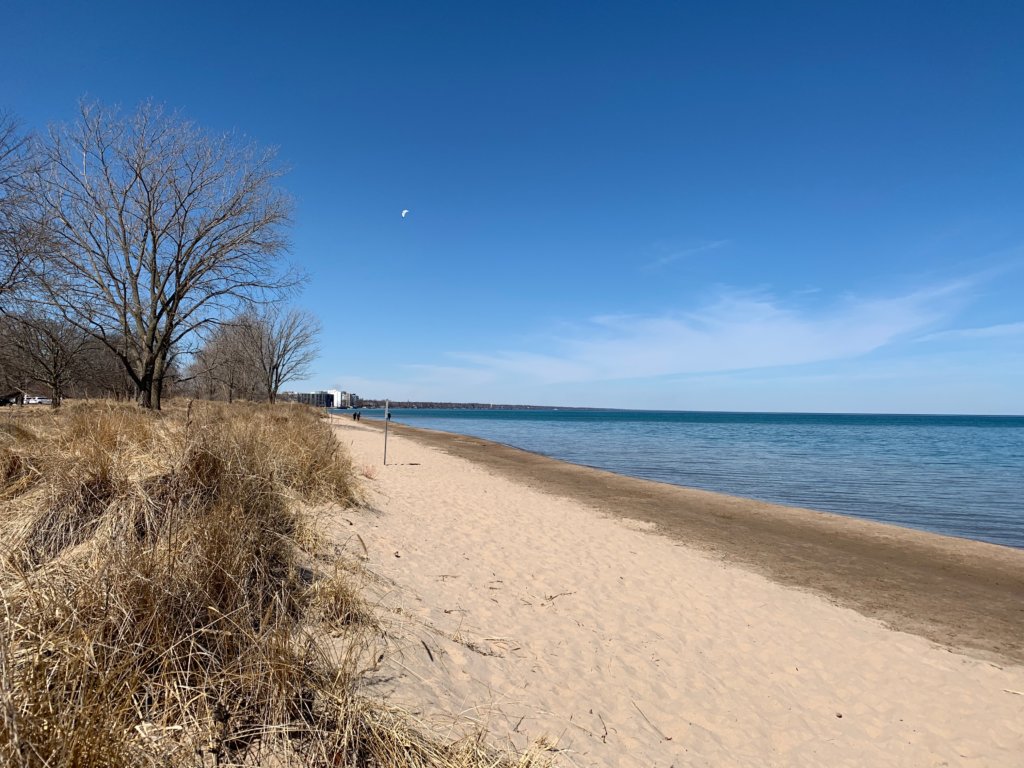
Located in the nearby suburb of Wilmette, Gillson Park is a half-mile walk from the Linden Avenue stop on the CTA’s Purple Line. This beautiful 60-acre park is located on the shore of Lake Michigan and features a public beach, picnic facilities, sailboat and kayak rentals, bicycling, soccer tennis and a wide variety of other recreational activities. Named for the first president of the Wilmette Park District’s Board of Commissioners, Louis K. Gillson, the park opened to the public in 1910.
7. Humboldt Park (Via Blue Line)
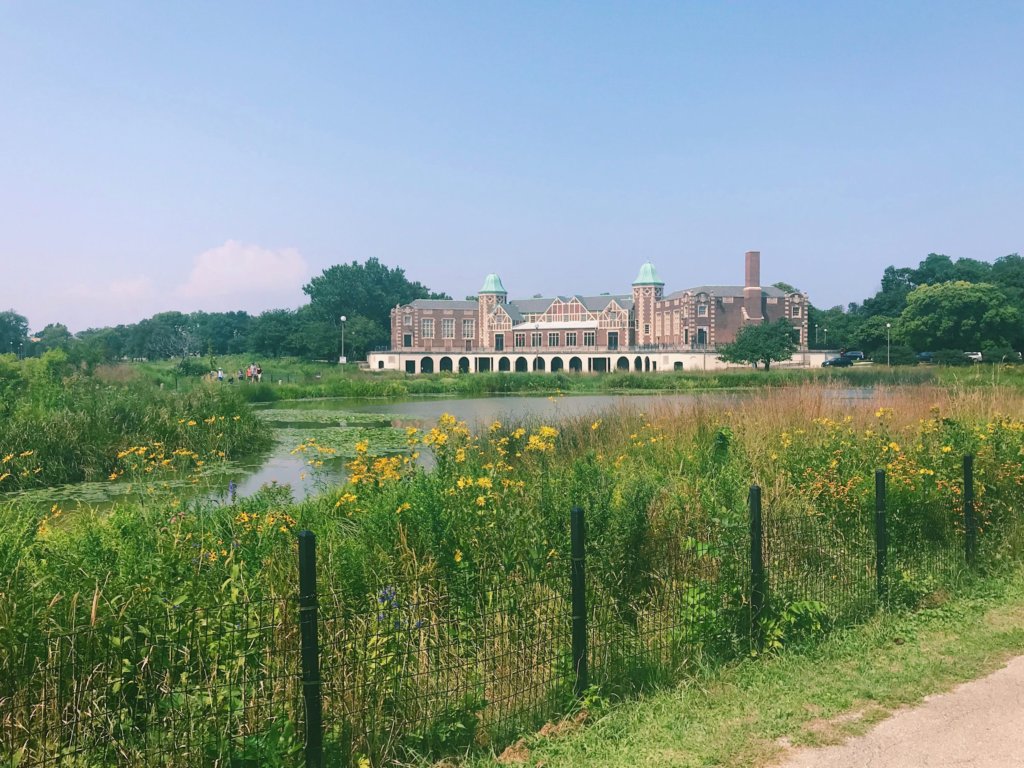
Humboldt Park is a 207-acre park on the West Side of Chicago that is located in a community of the same name. The park was named for Alexander von Humboldt, a well-known geographer and naturalist in the mid-1800s. The park features three major historical public buildings, including the Boat House (now a café overlooking the lagoon); the Field House, which includes a fitness center, two gymnasiums, meeting rooms and an inland beach; and the historic Humboldt Park Stables, which is in the process of being converted to the National Museum of Puerto Rican Arts and Culture. Humboldt Park is a 20-minute walk from the Blue Line Damen Ave. stop.
8. Oz Park (Via Brown Line)
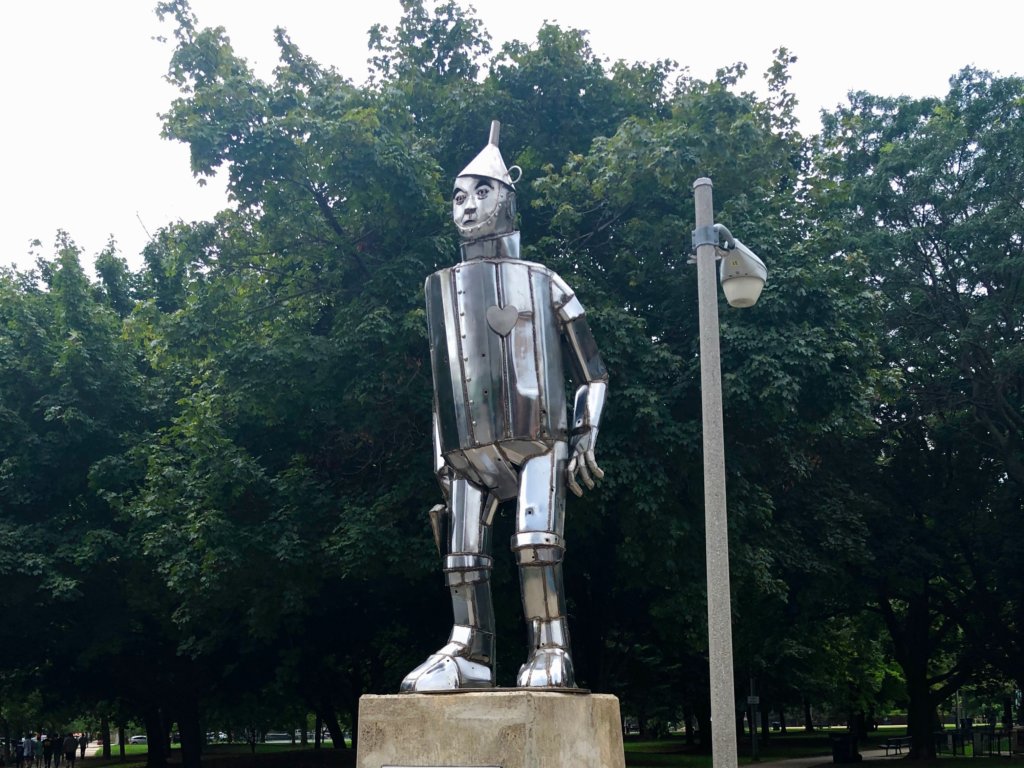
Located in the Lincoln Park neighborhood, Oz Park takes its name from a novel written by Lyman Frank Baum, a former resident of the neighborhood who wrote “The Wonderful Wizard of Oz.” The 13-acre park features sculptures of characters from the novel, The Tin Man, the Cowardly Lion, the Scarecrow and Dorothy and Toto. “The Emerald Garden,” located at the northeast corner of the park, has a path of flowers that visitors can walk through; nearby is “Dorothy’s Play Lot,” which includes swings and climbing equipment for children. Oz Park is located a few blocks from the Brown Line Armitage stop. You can see more of what the Brown Line has to offer on our Historic Pub Tour.
Holder of two journalism degrees, including a masters from Northwestern University, Tom Schaffner is a native of the Chicago area and has spent nearly 50 years as a writer, editor, publisher and professional communications consultant. He was also the founder, editor, and publisher of the Chicago File, a newsletter for former Chicagoans. Tom is also the co-owner of L Stop Tours.

